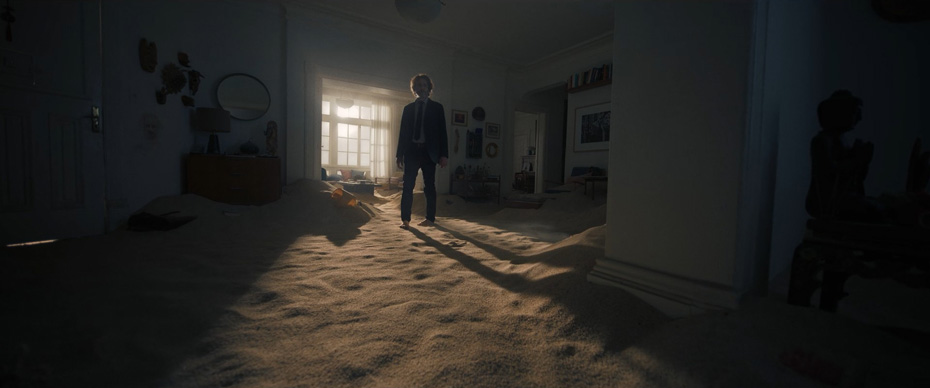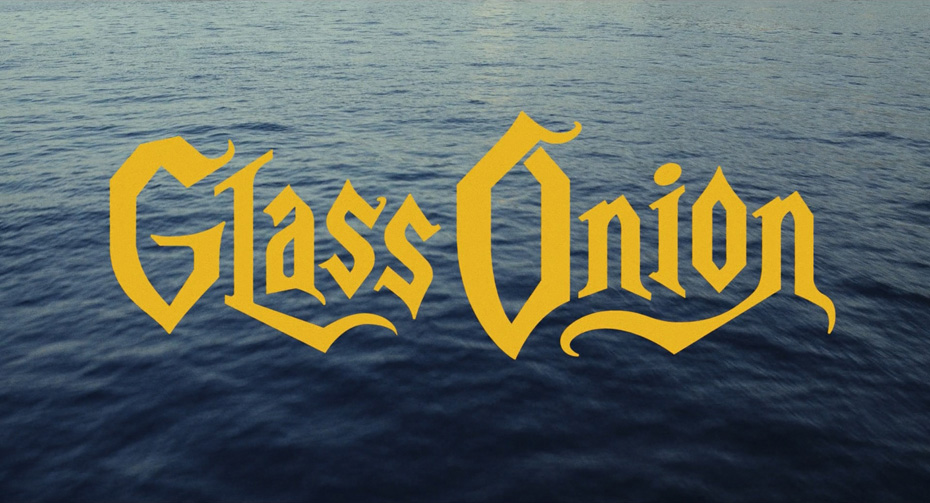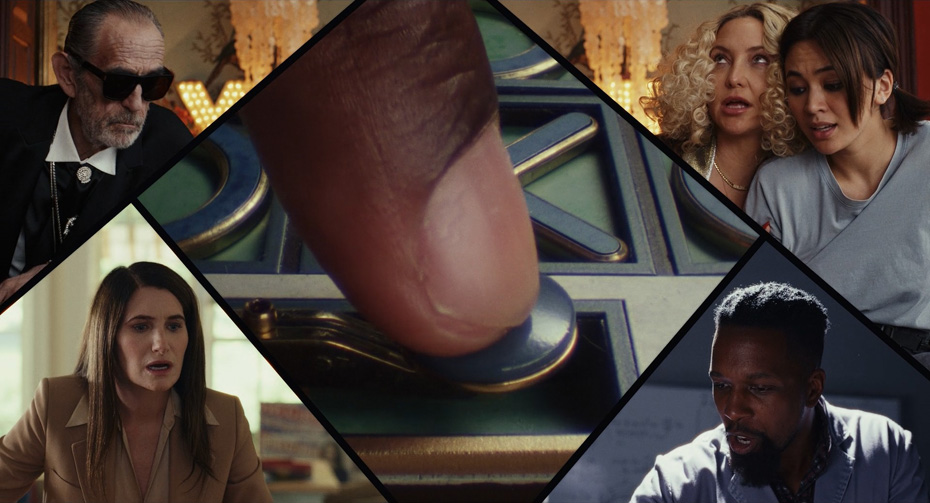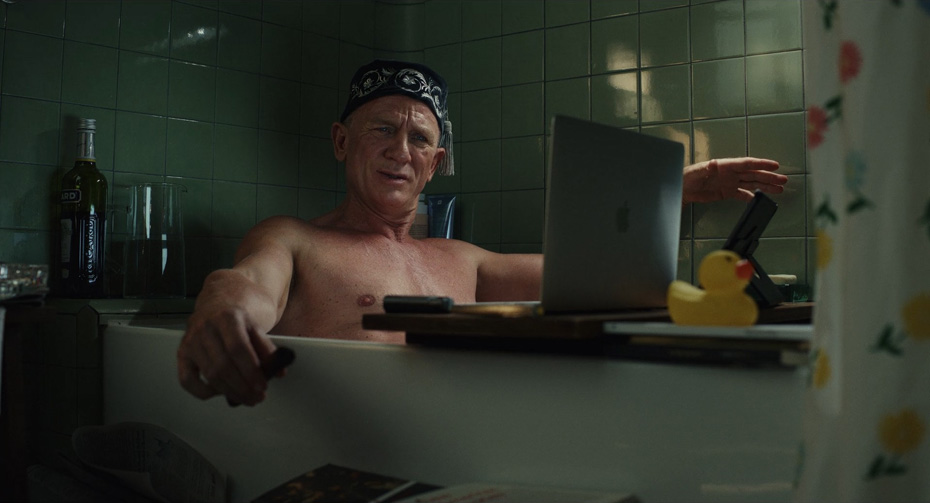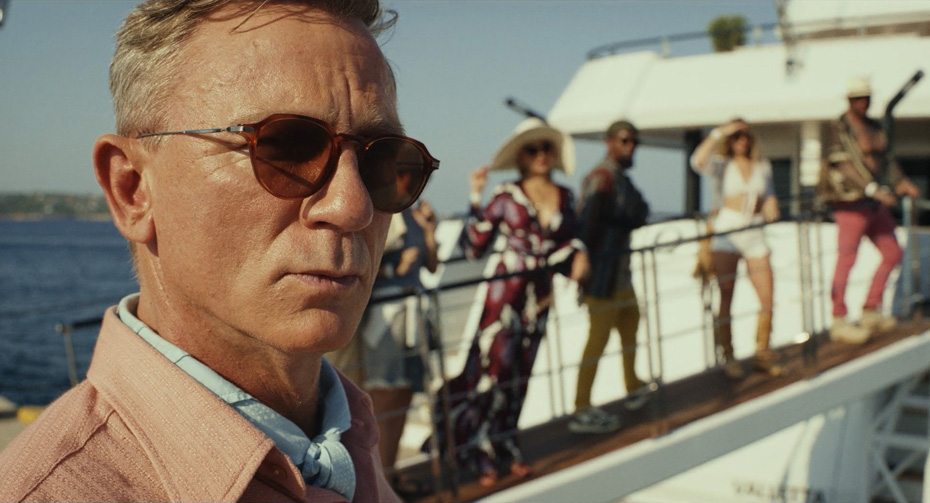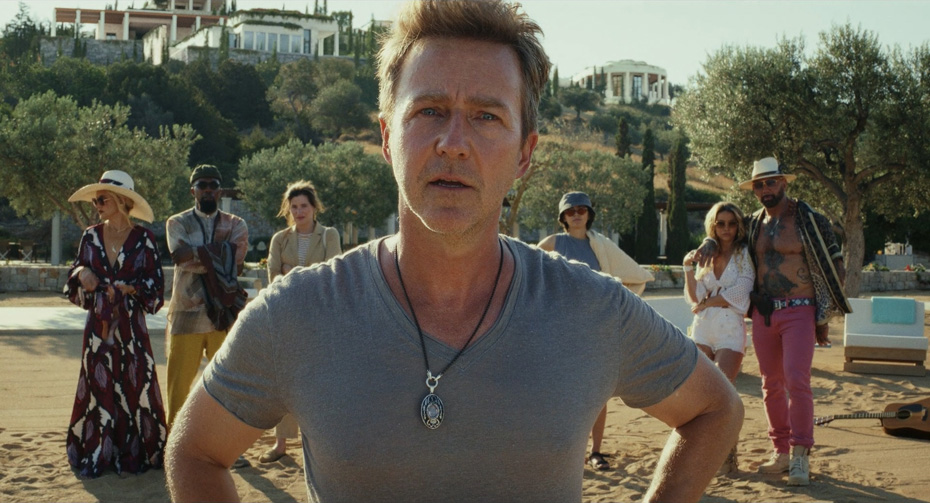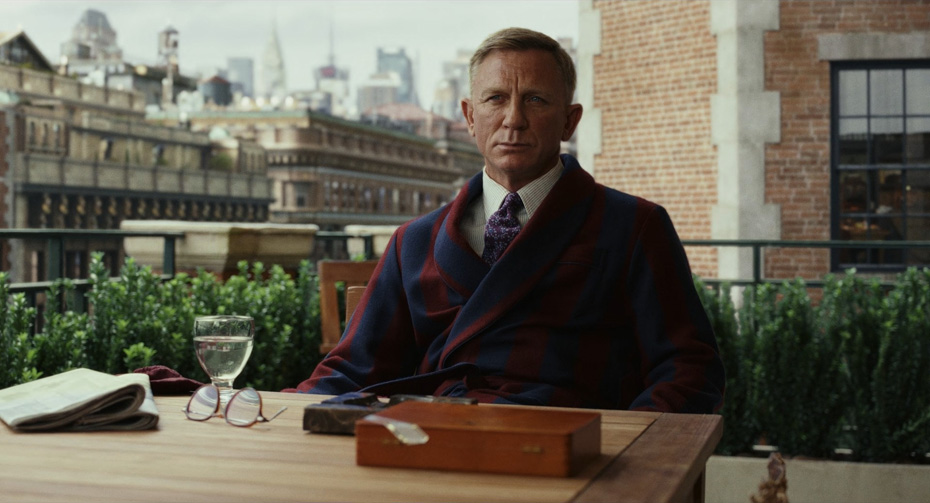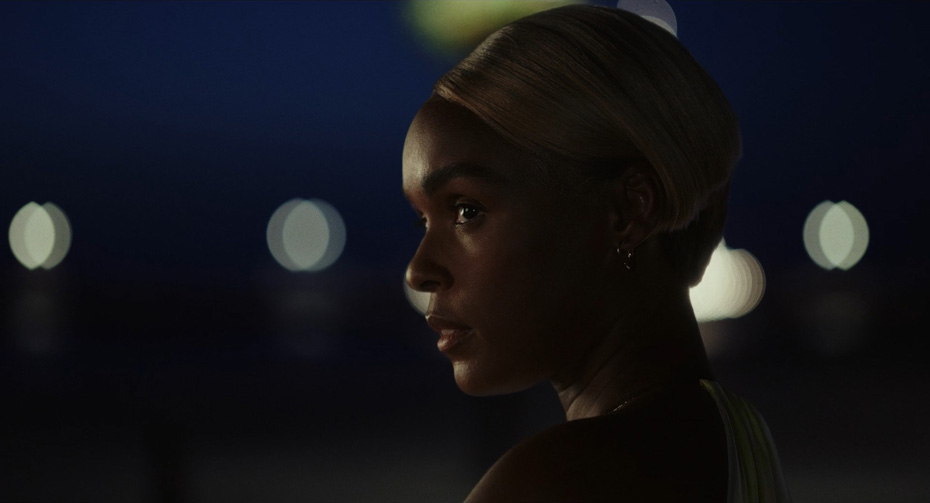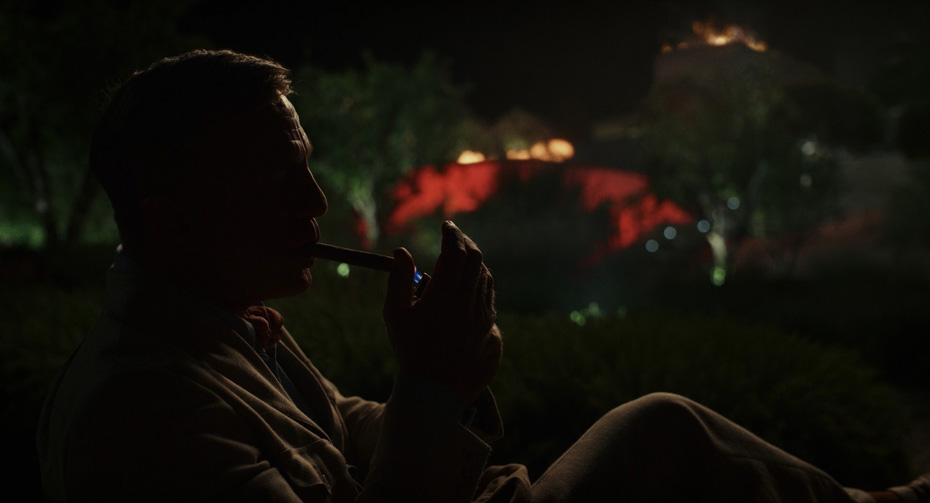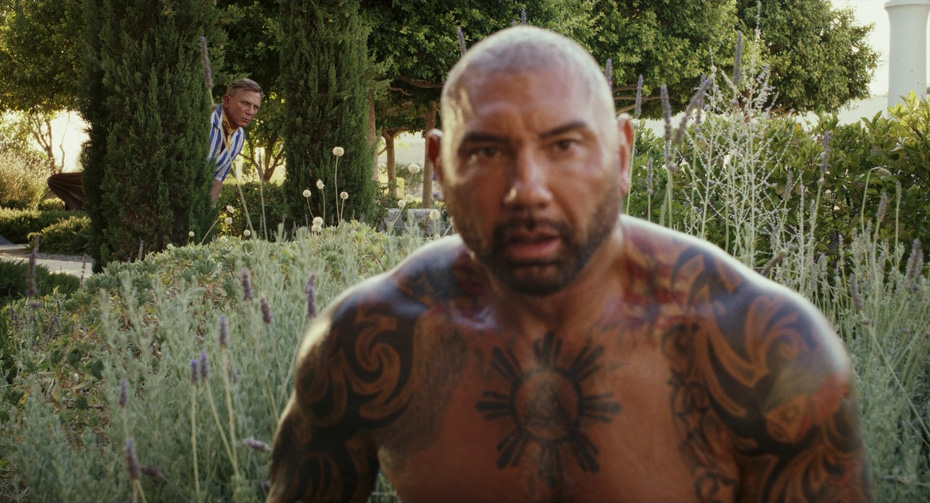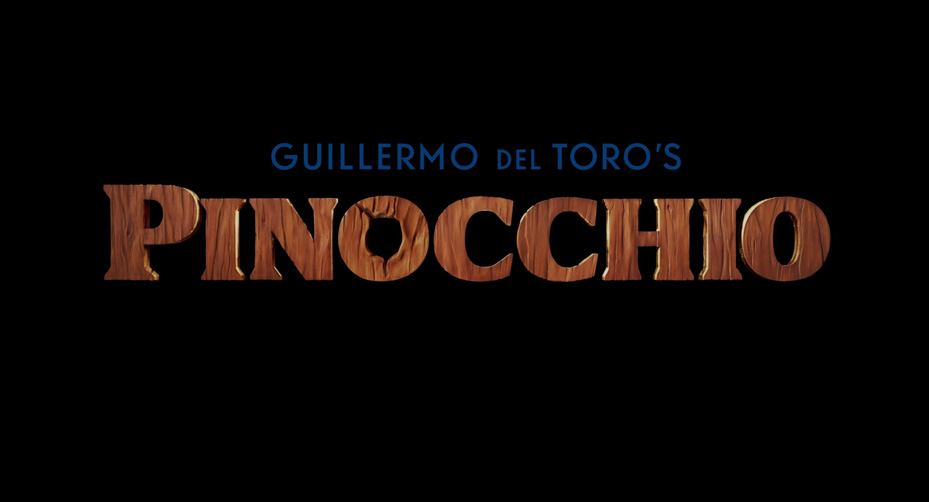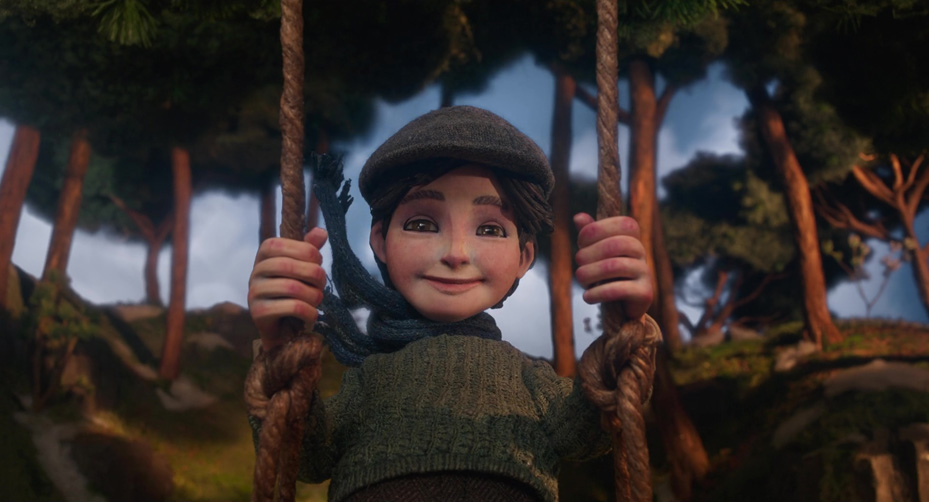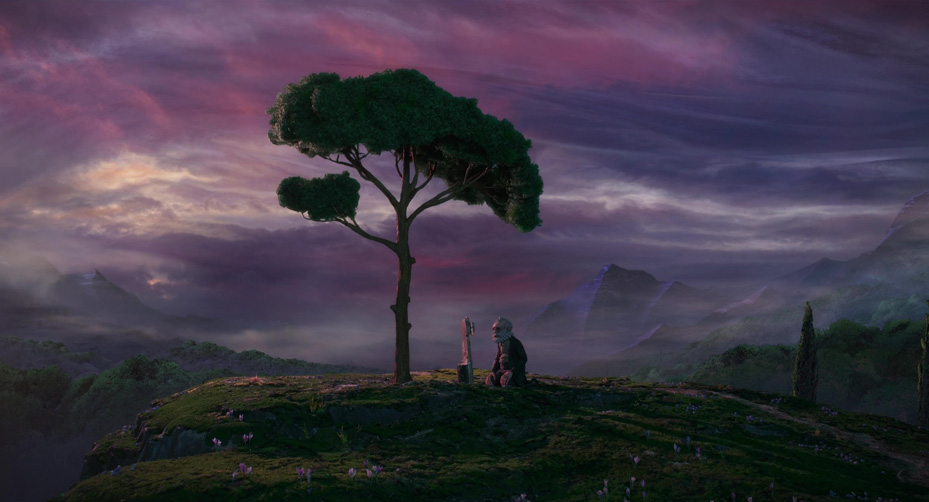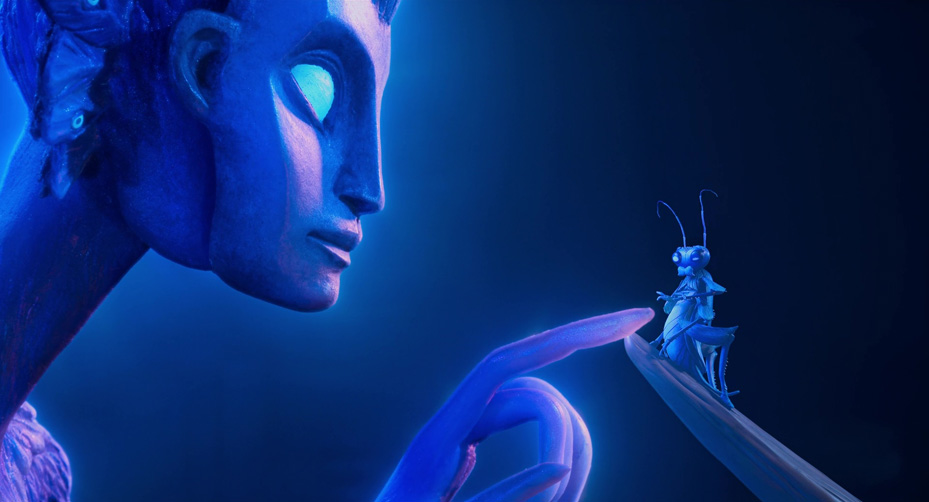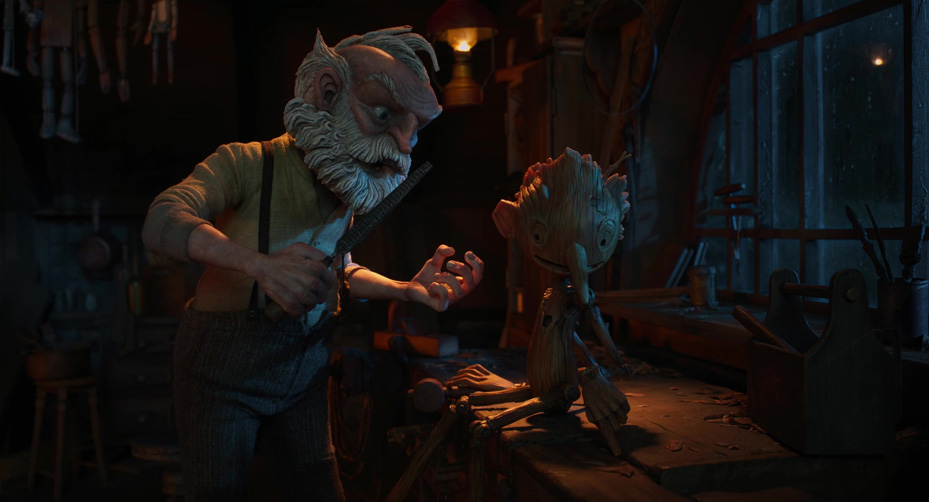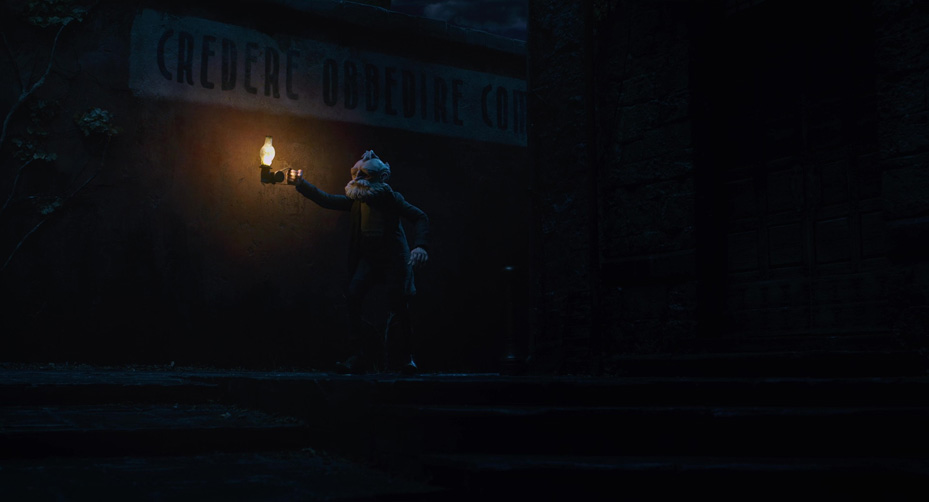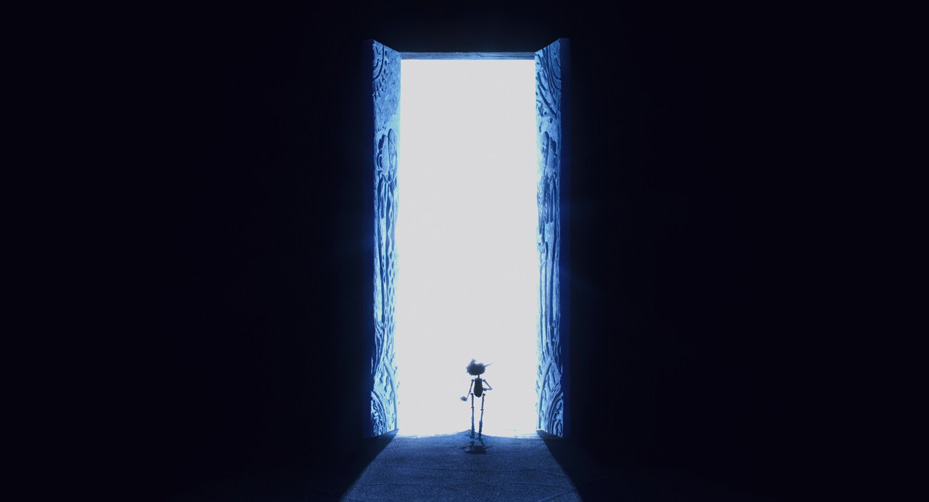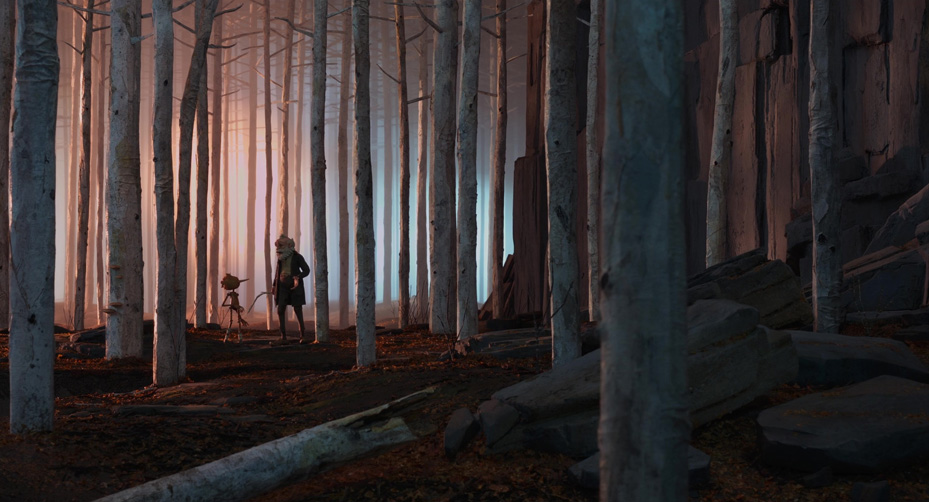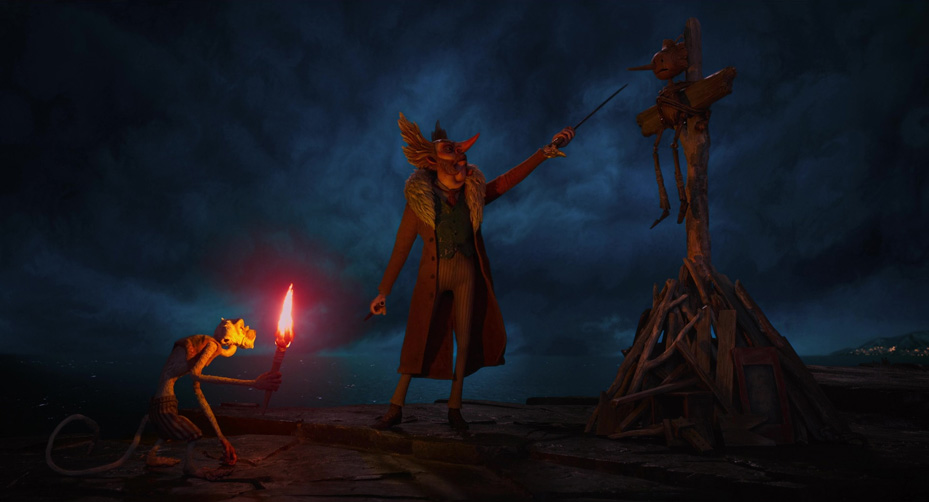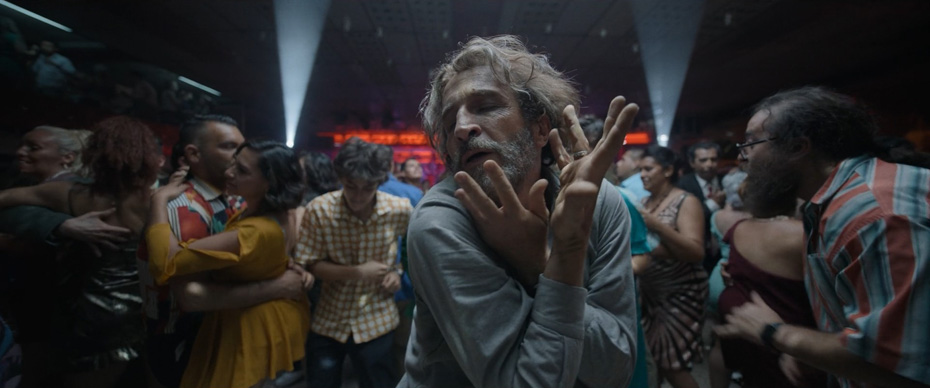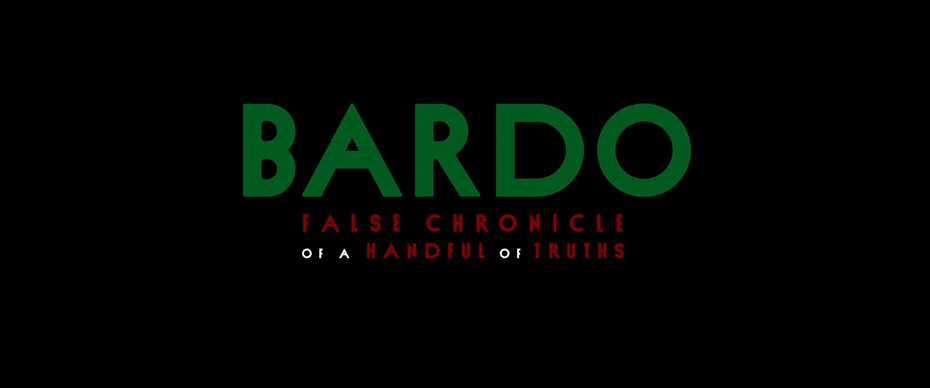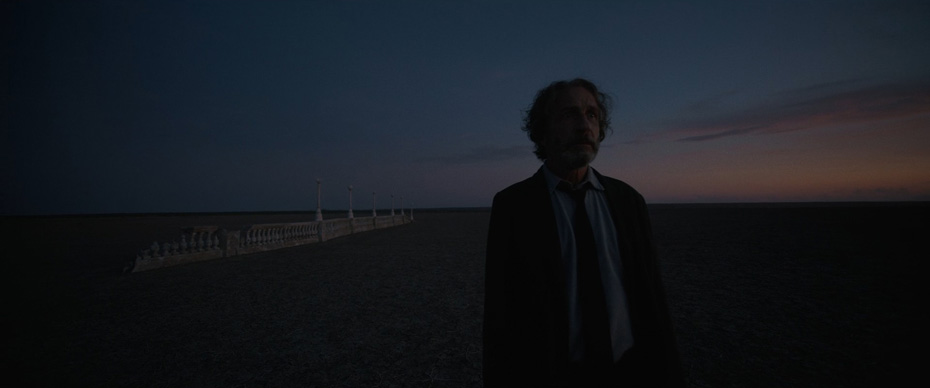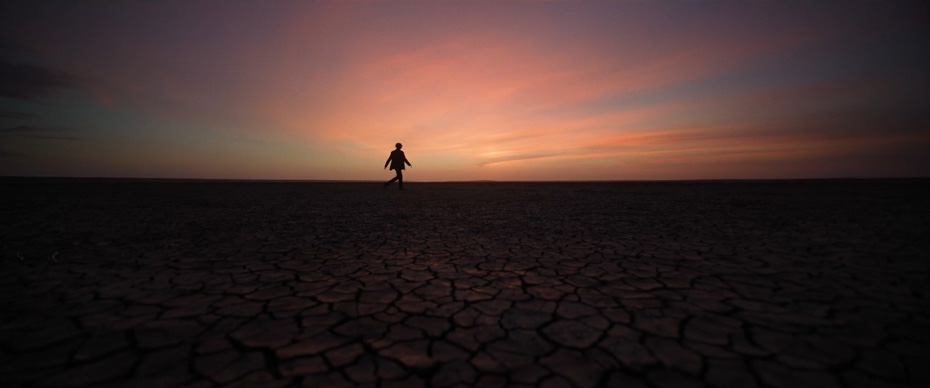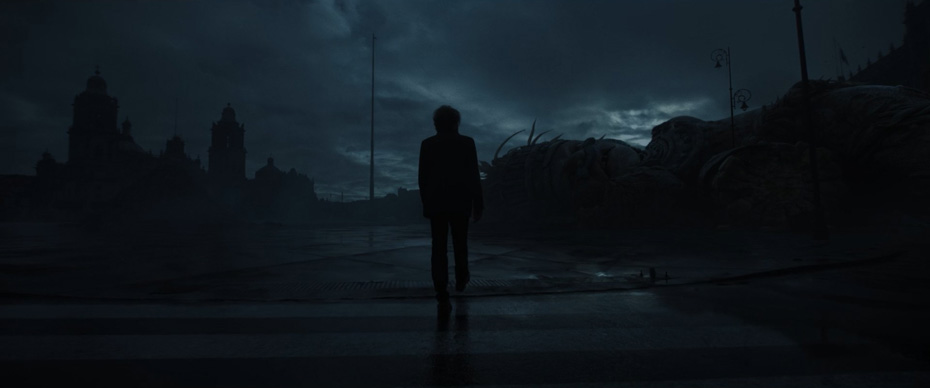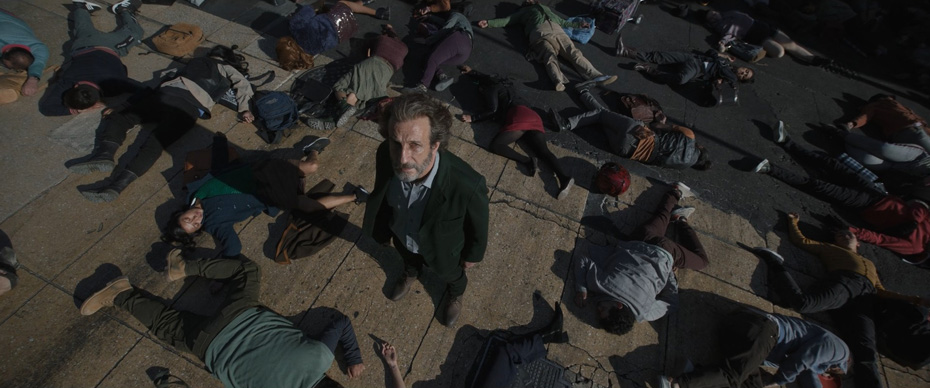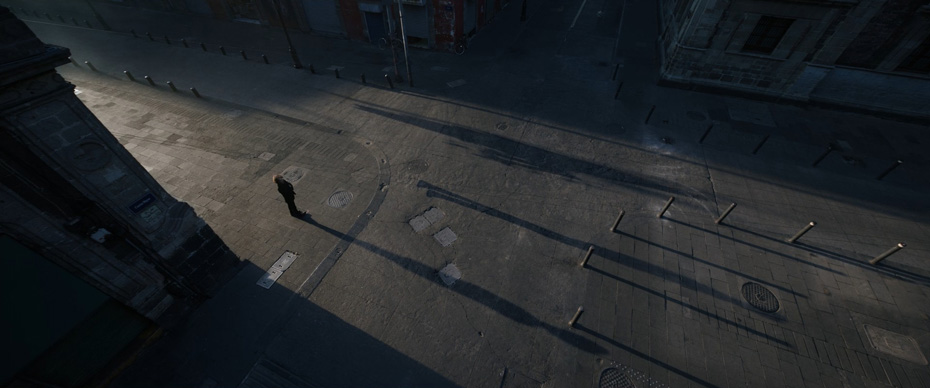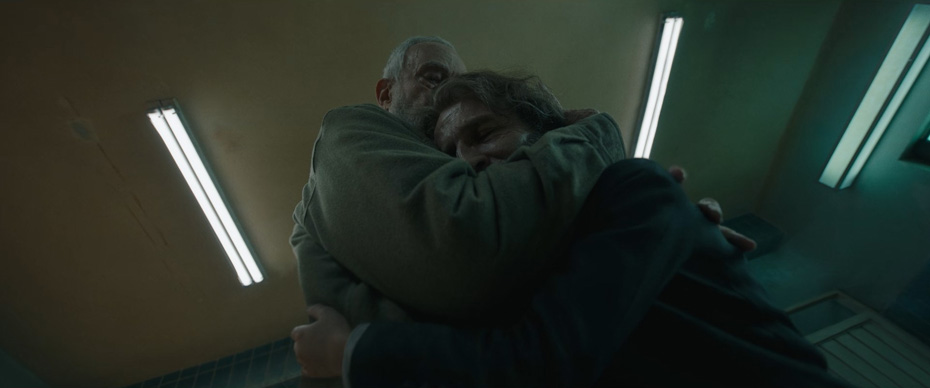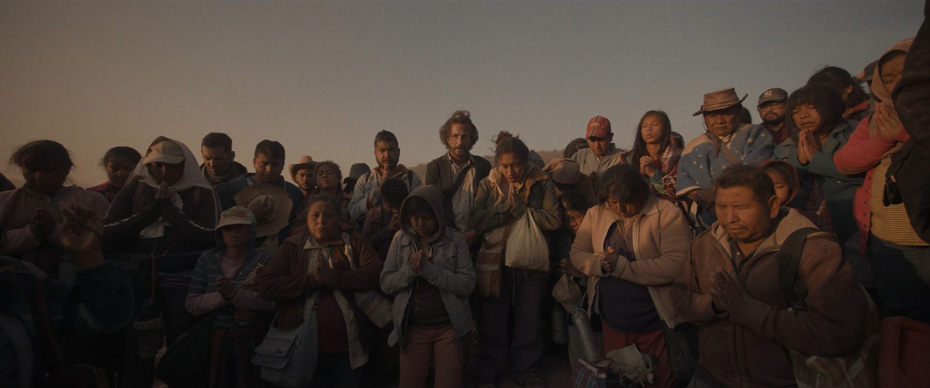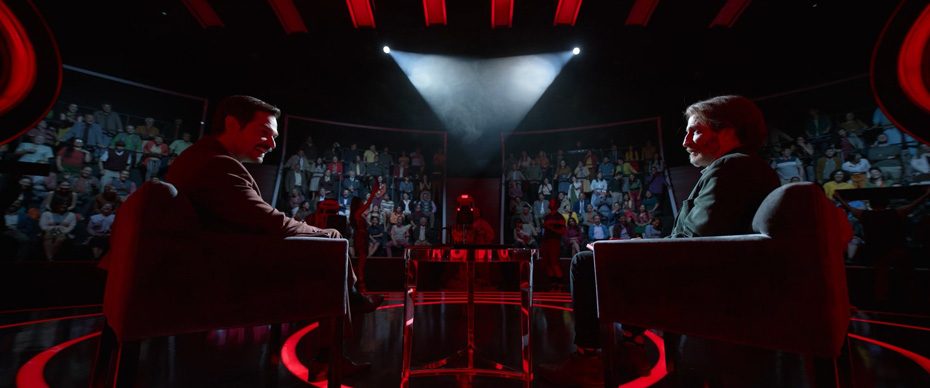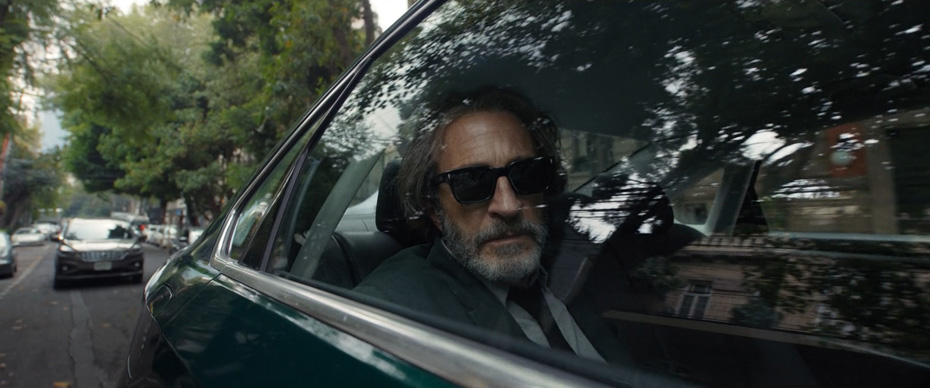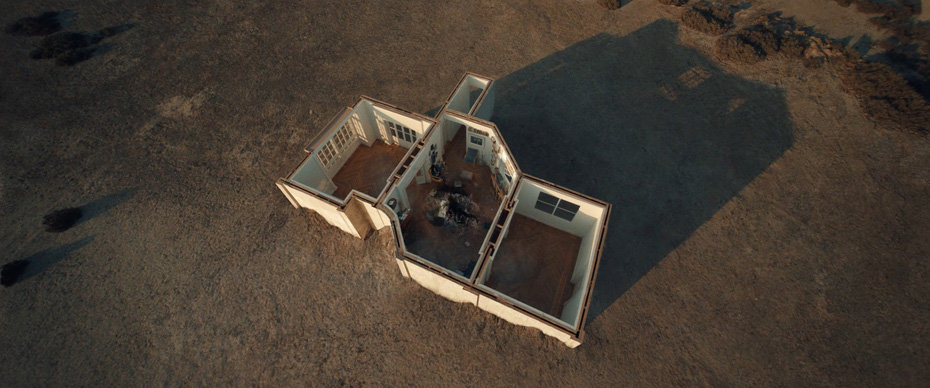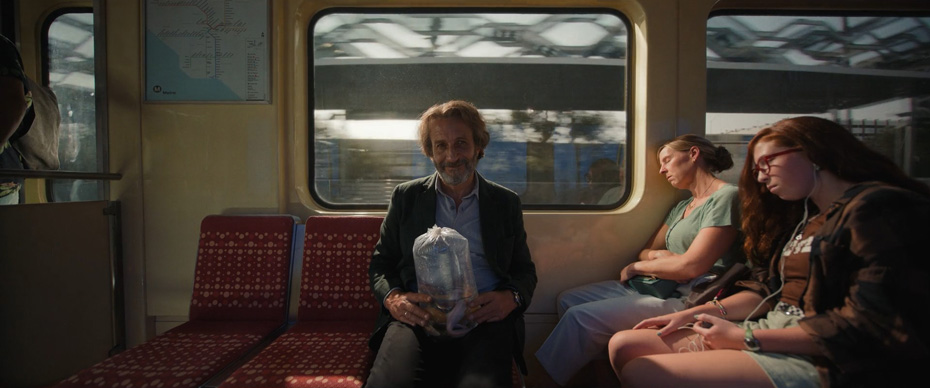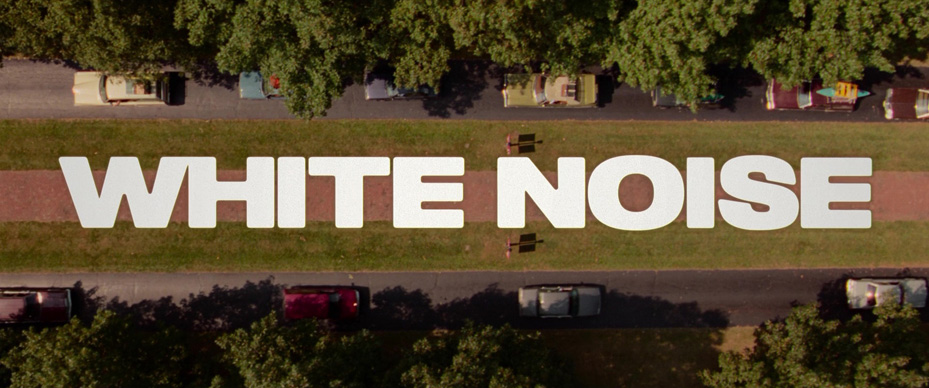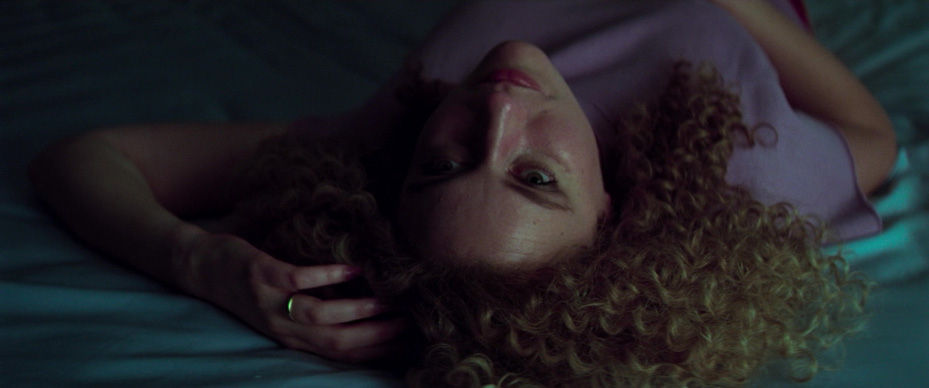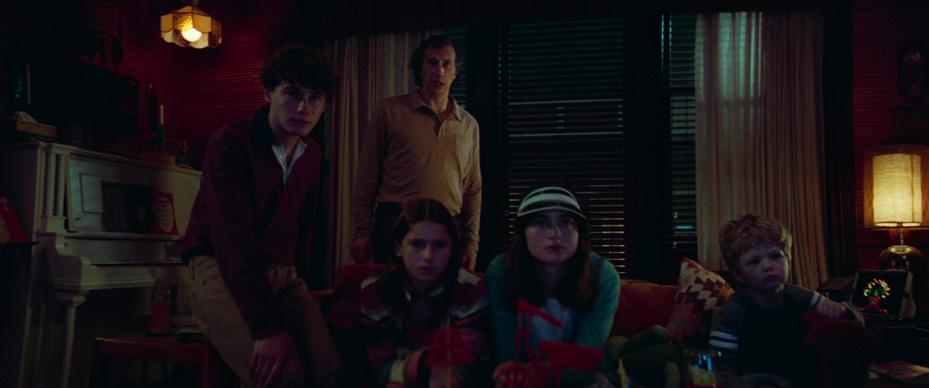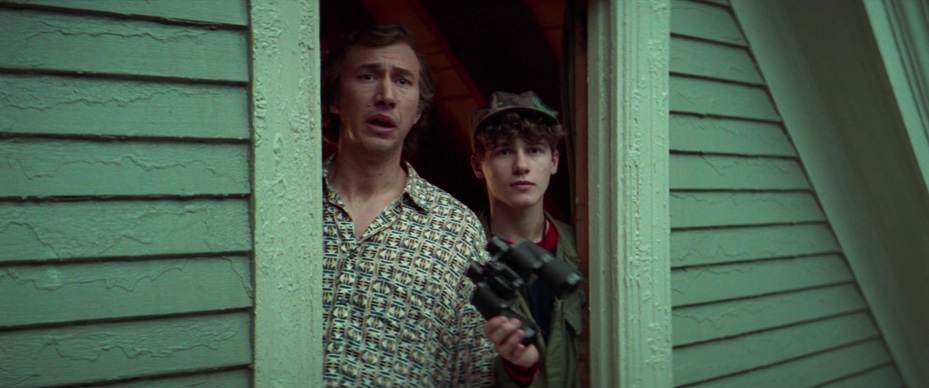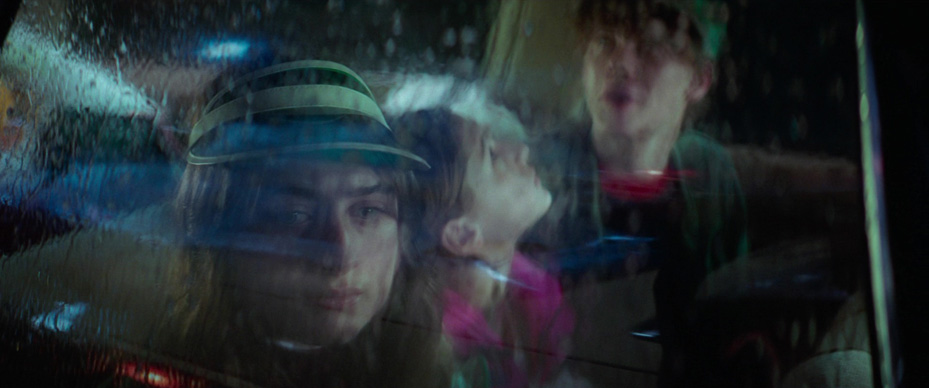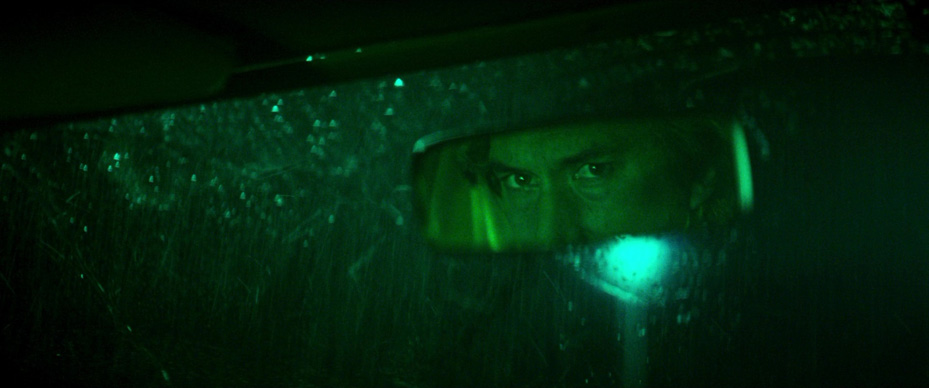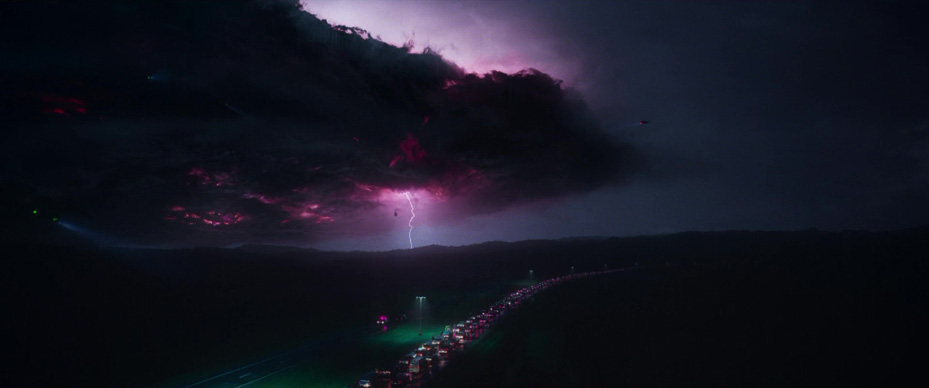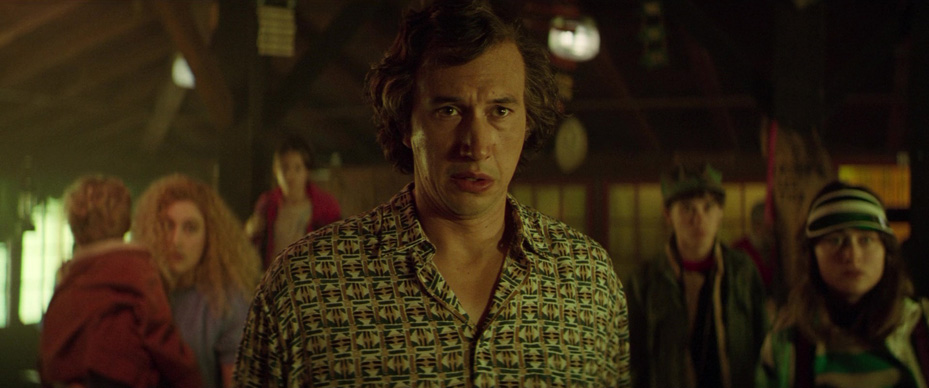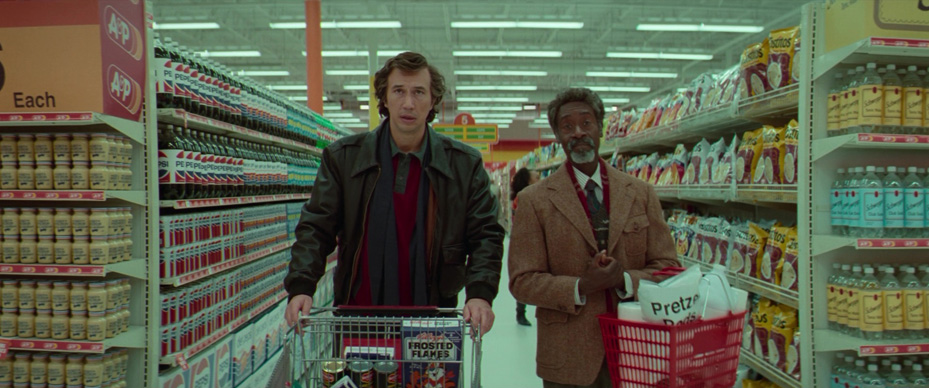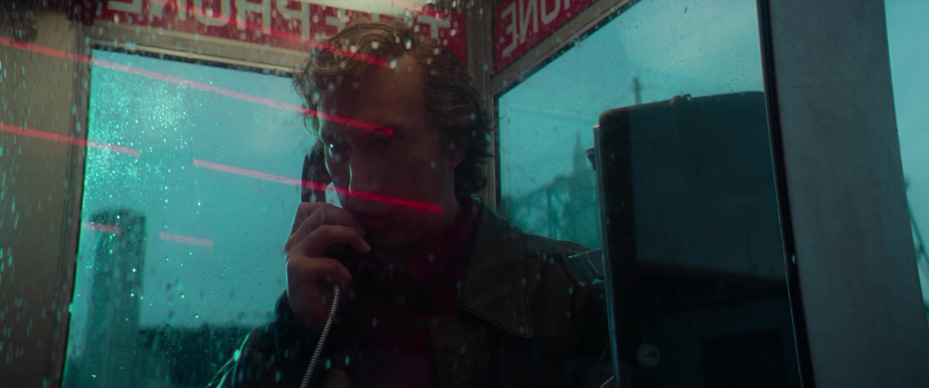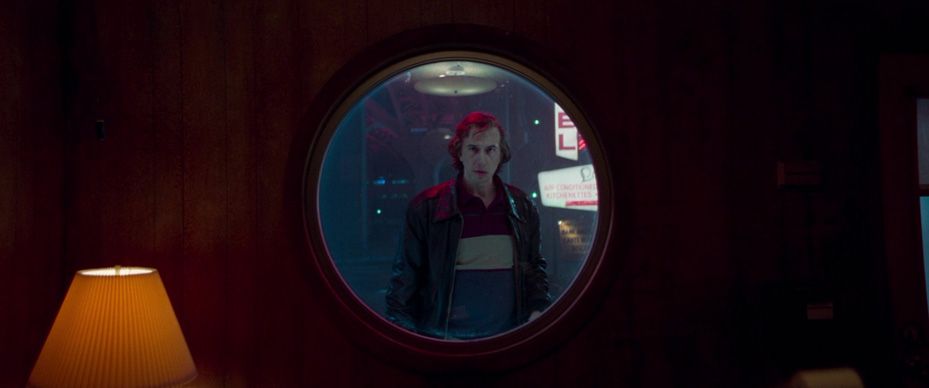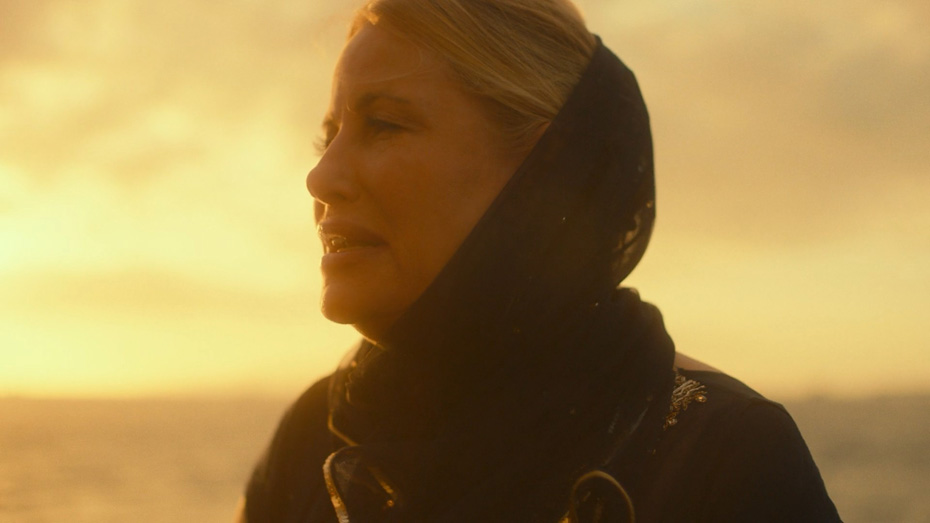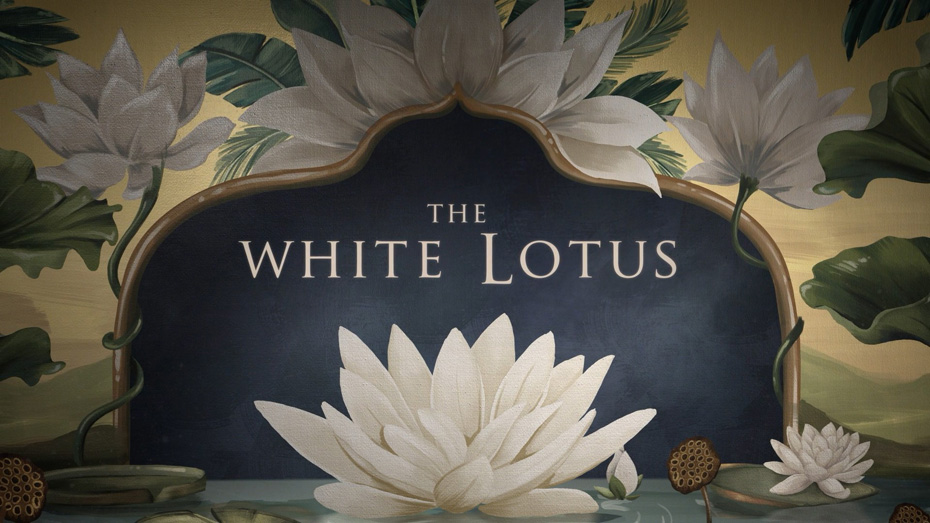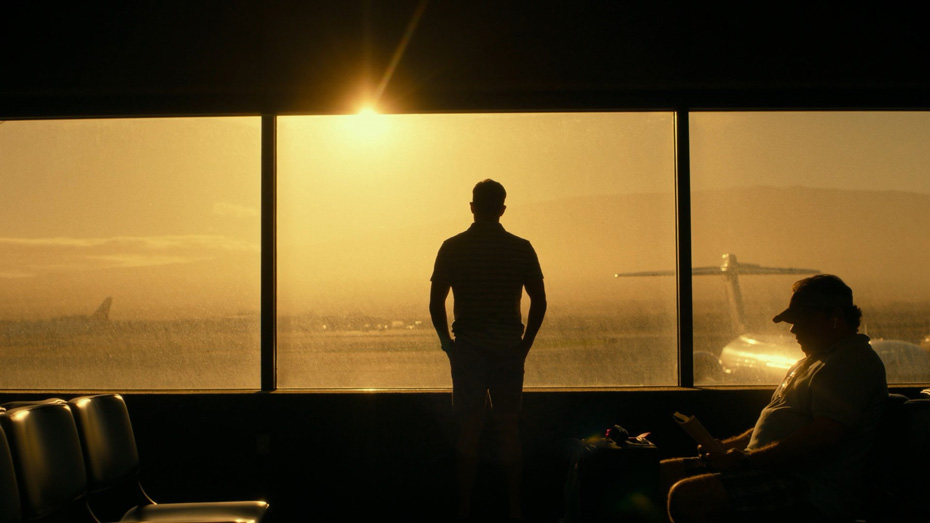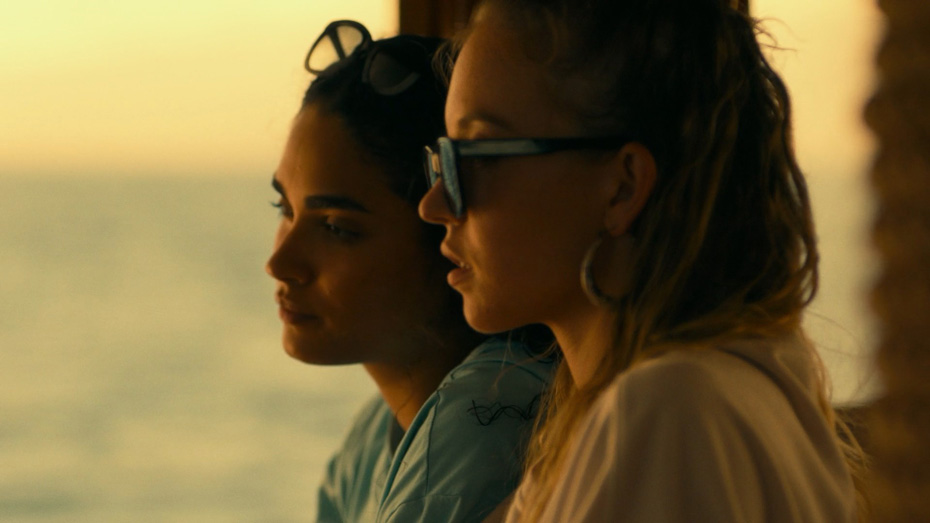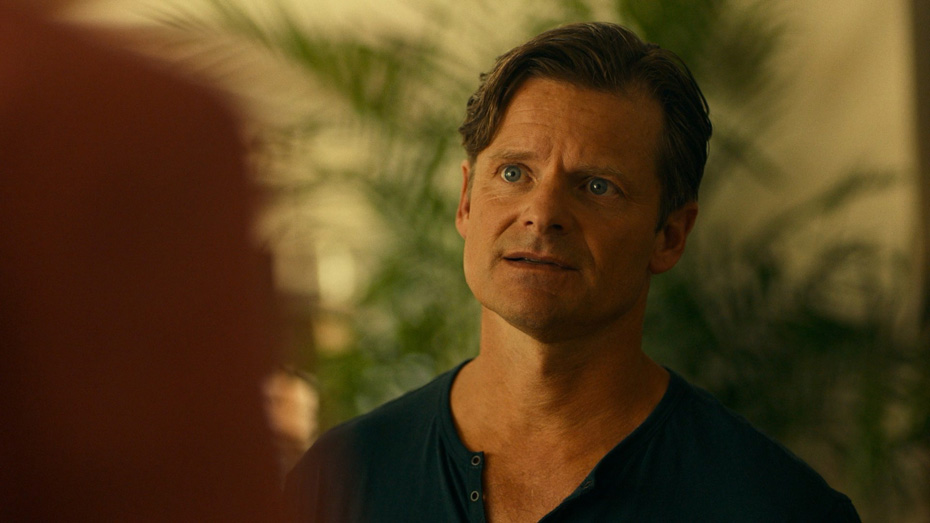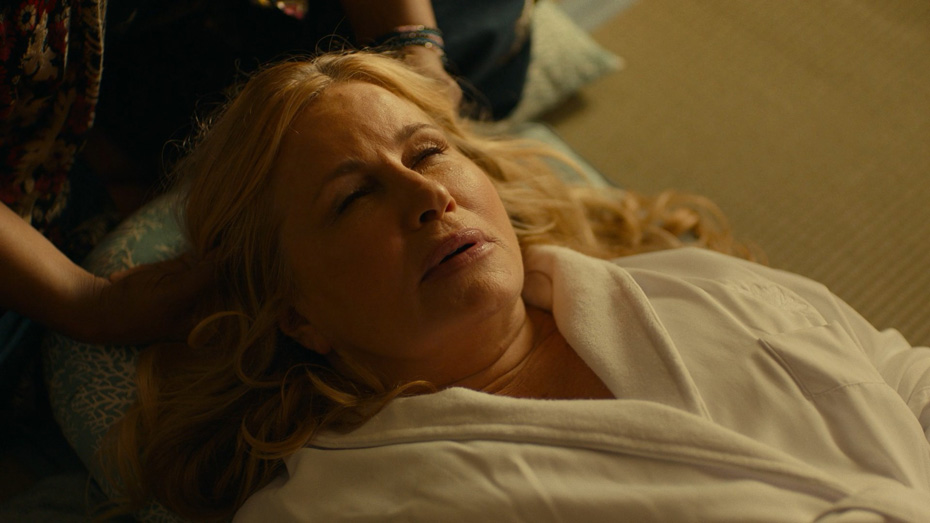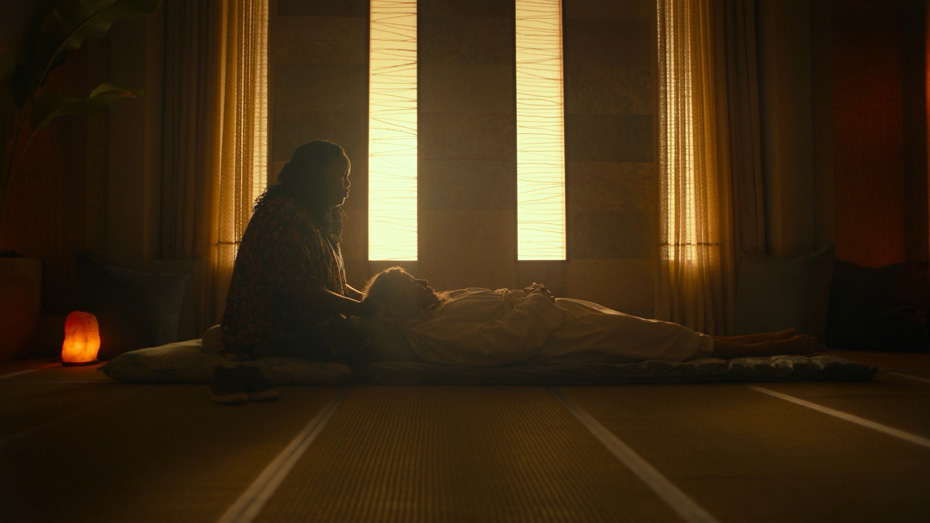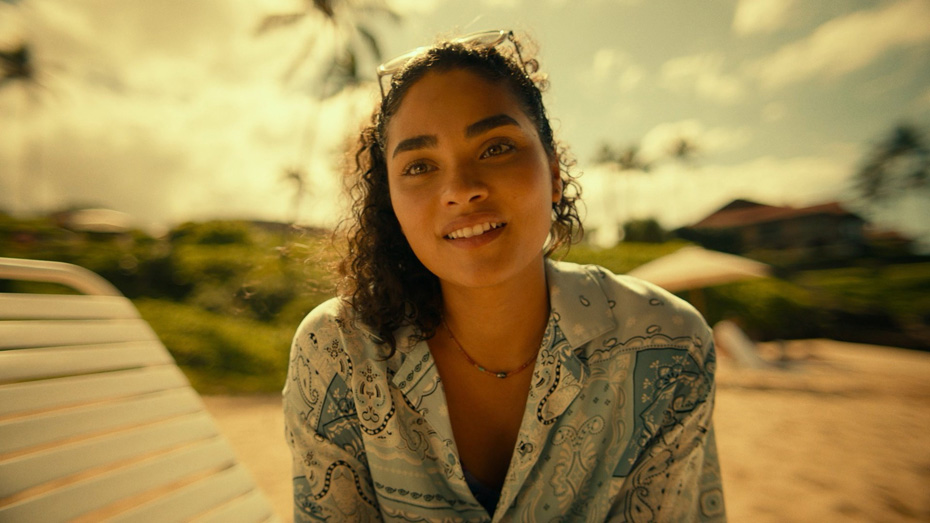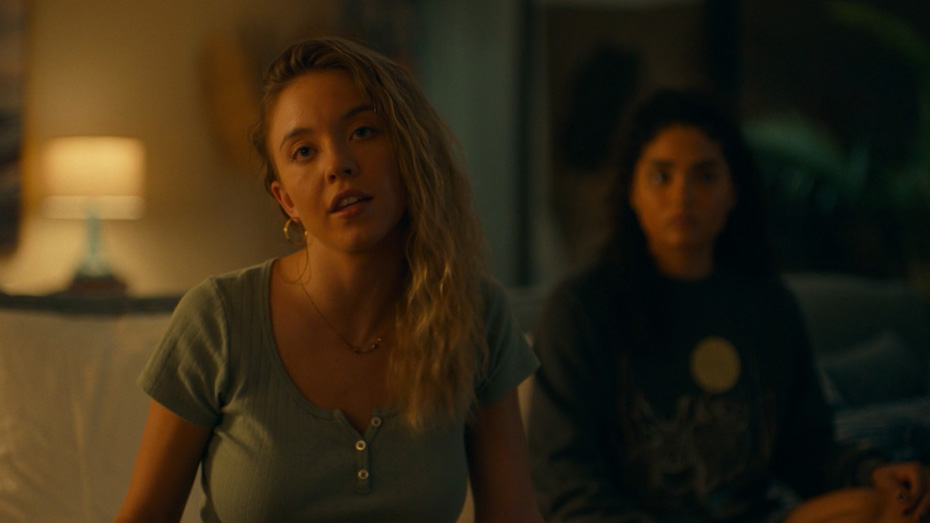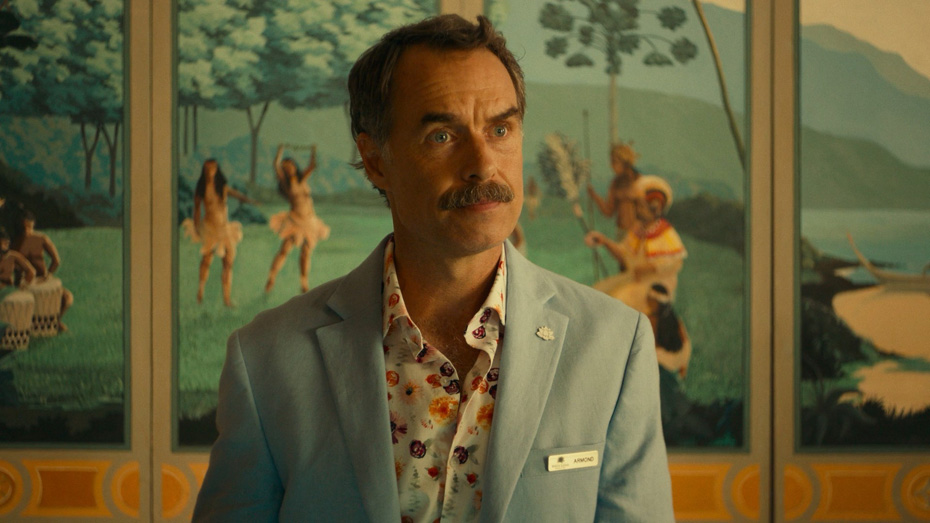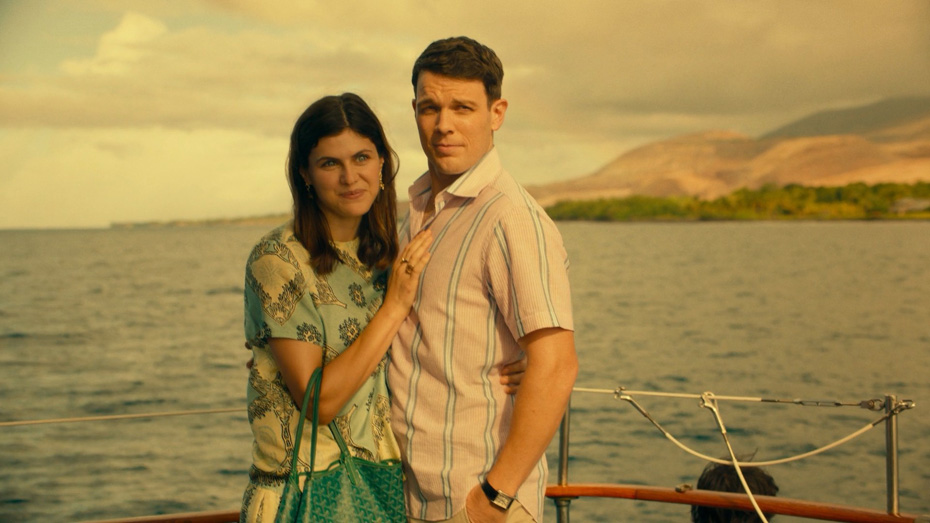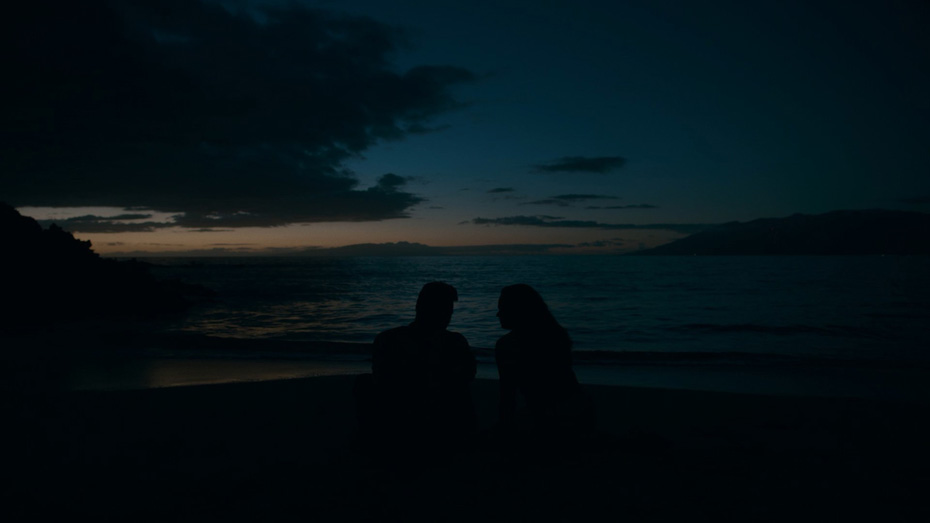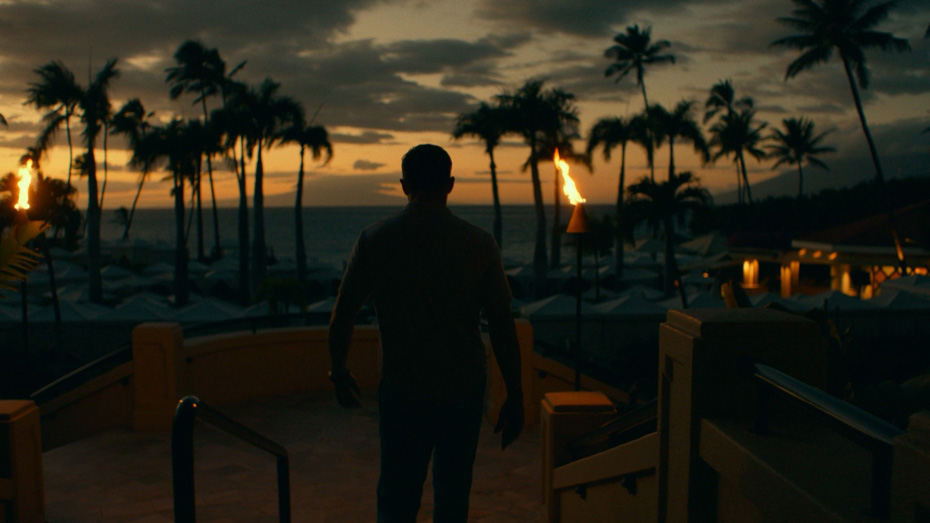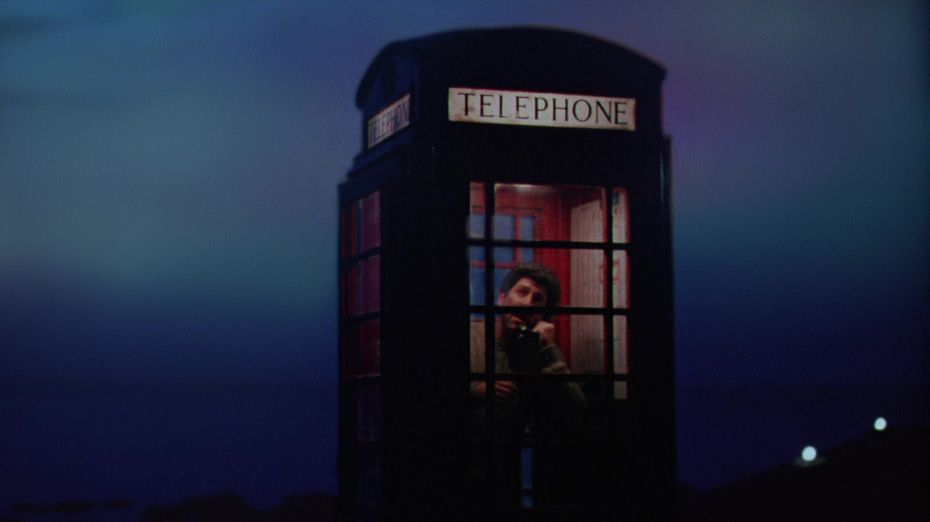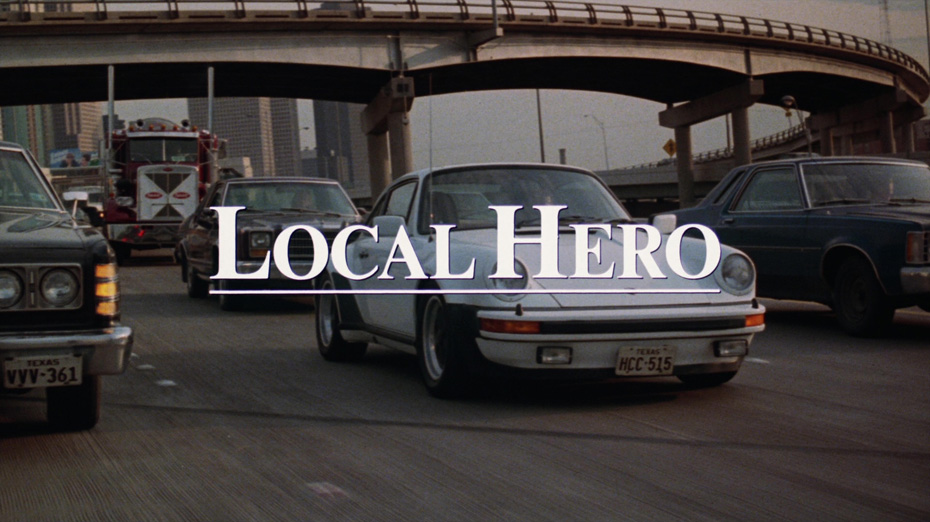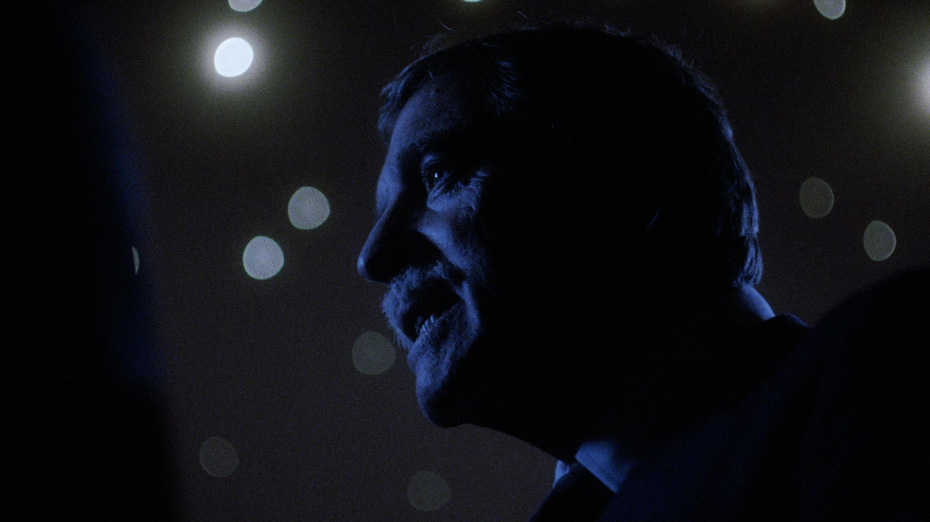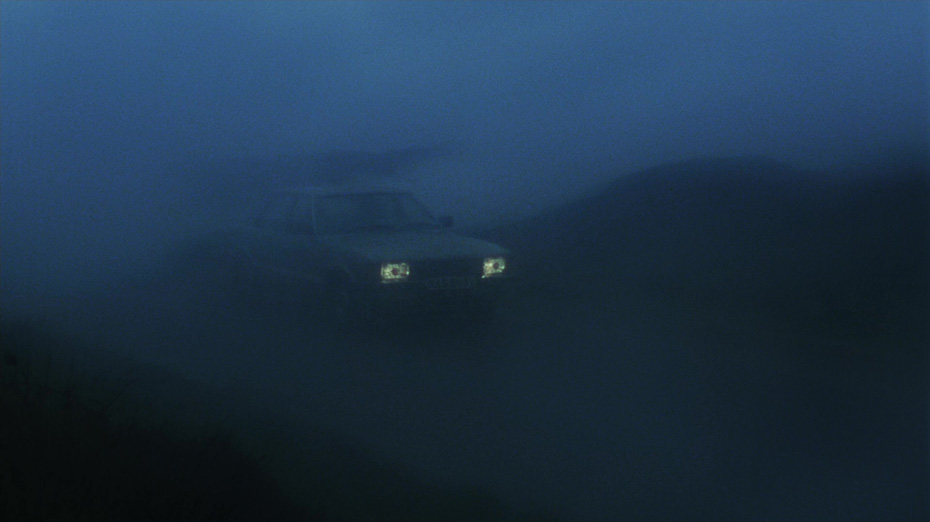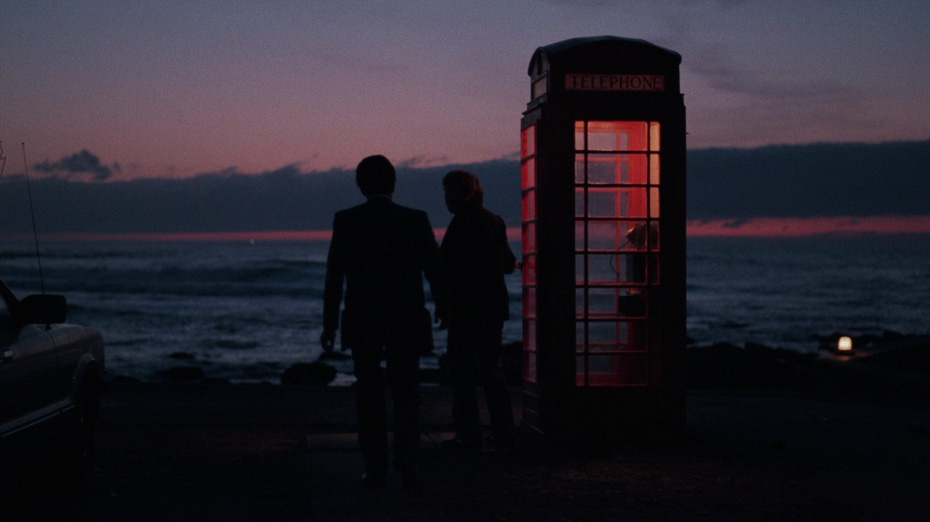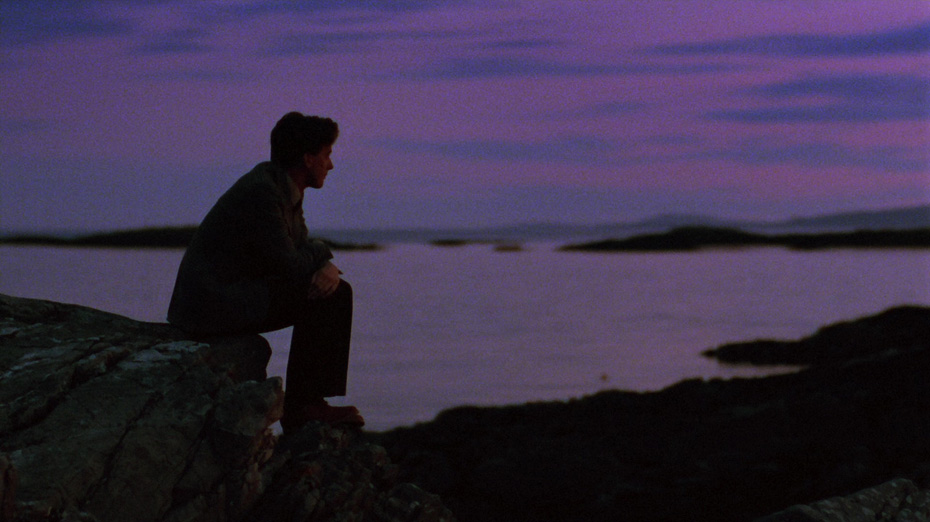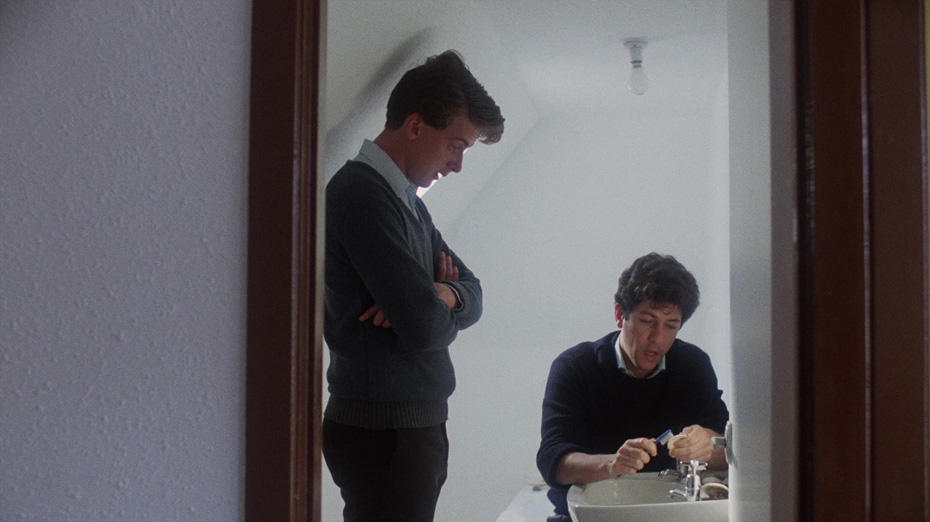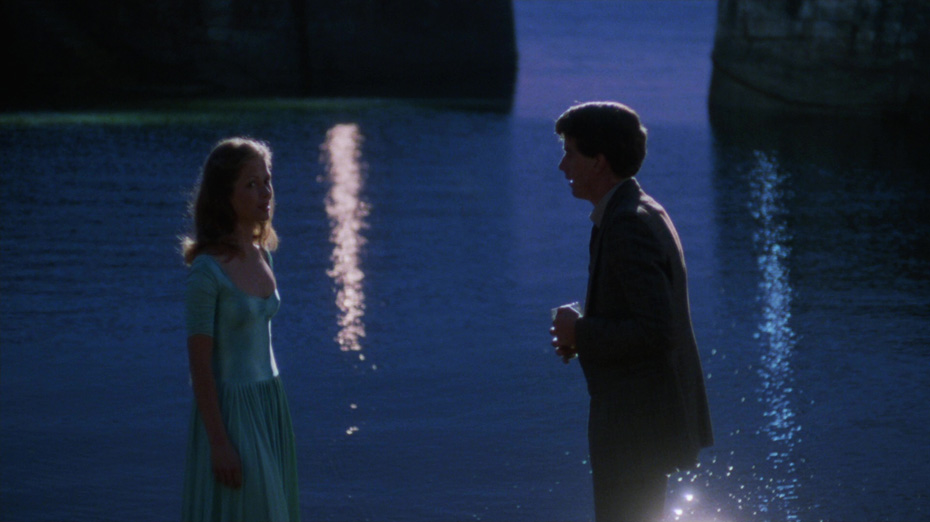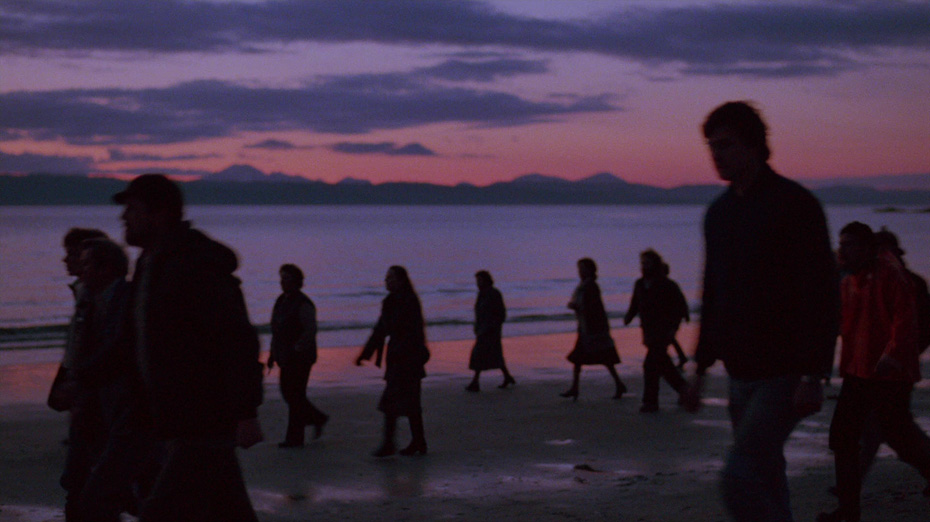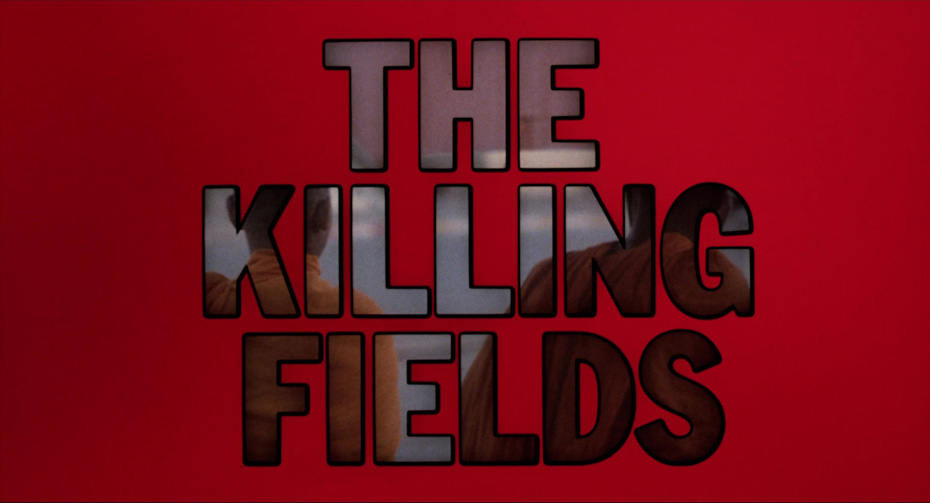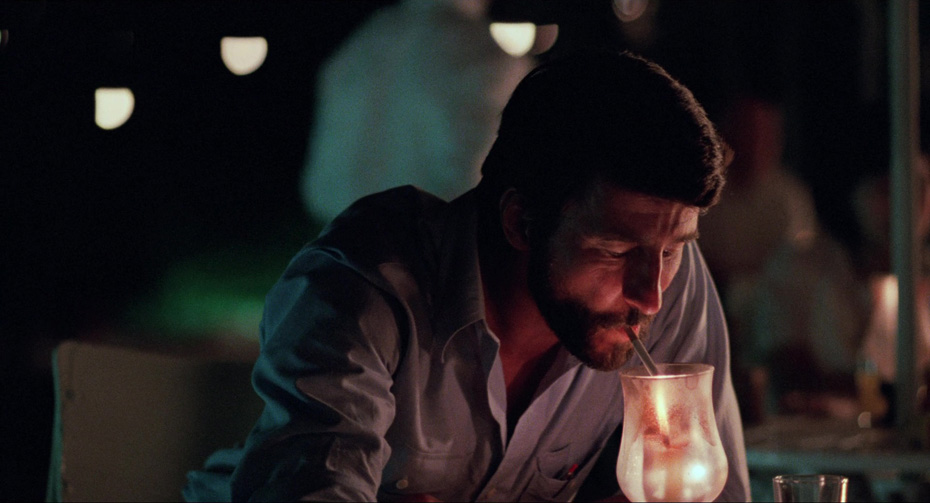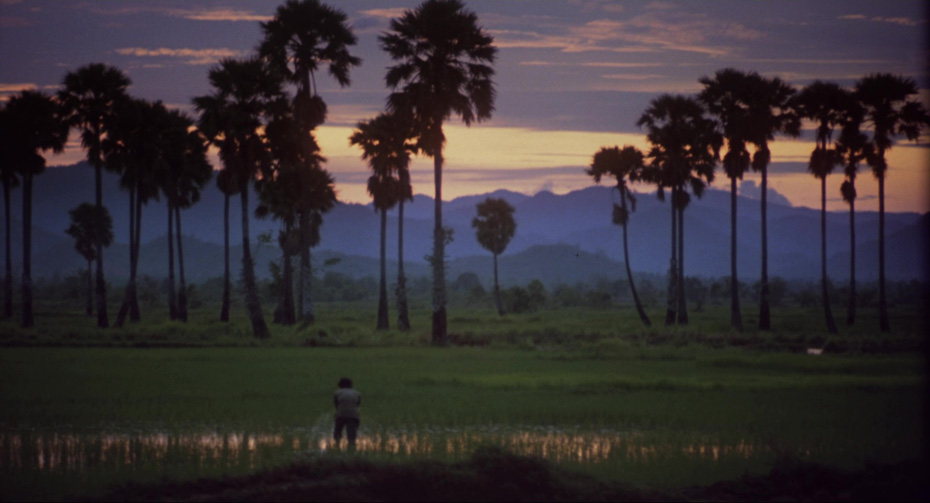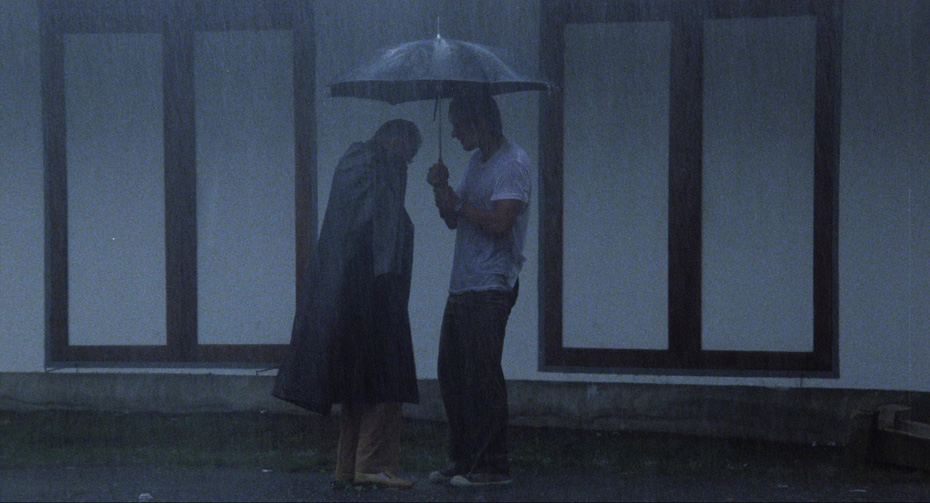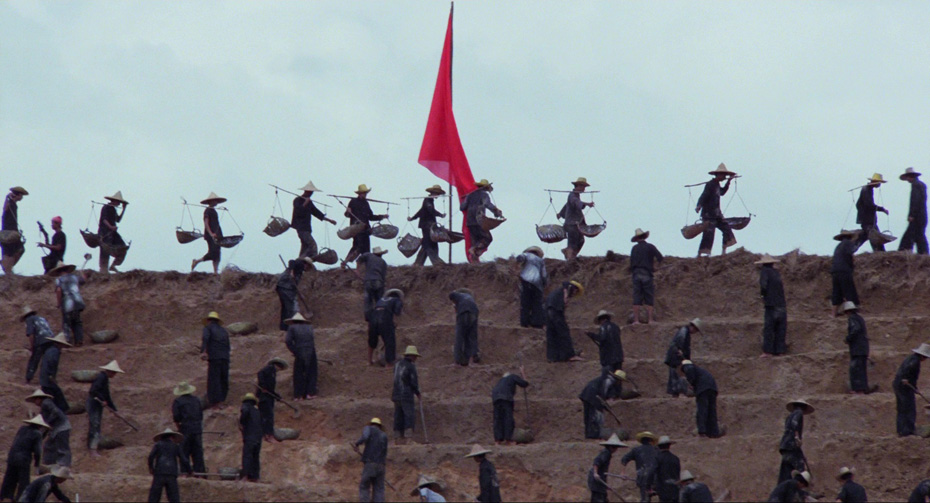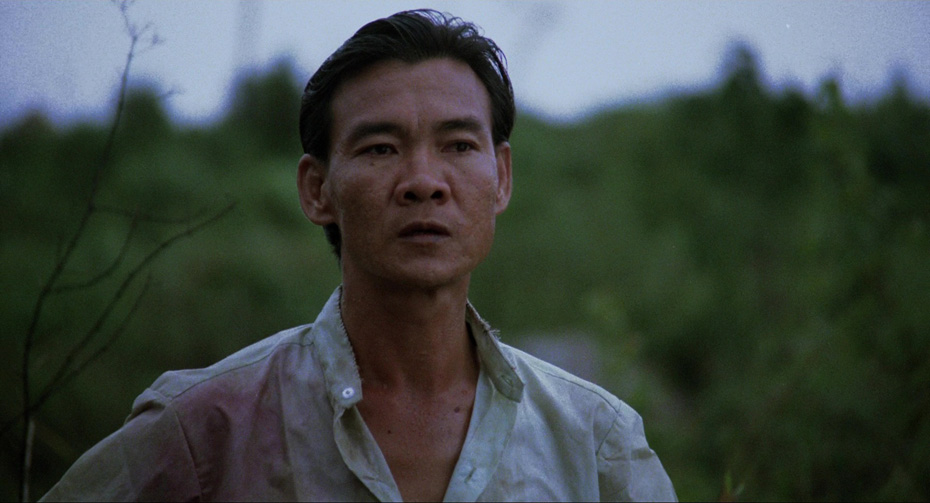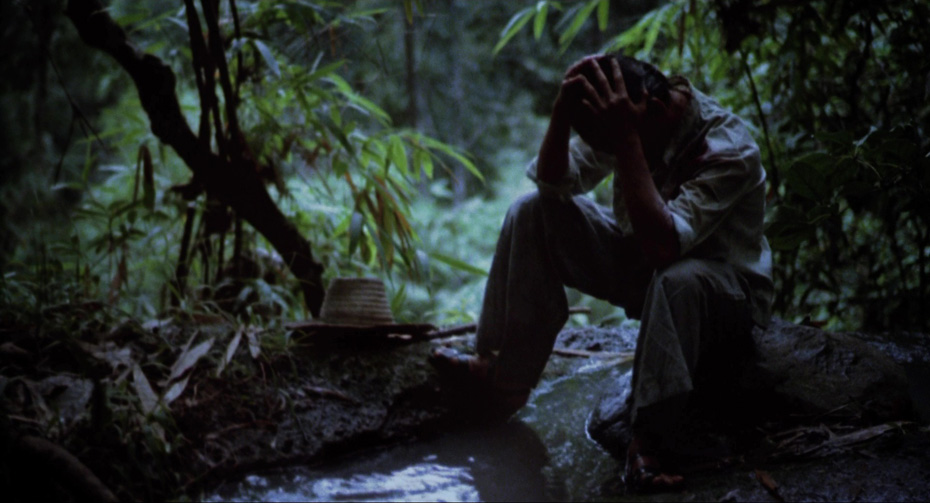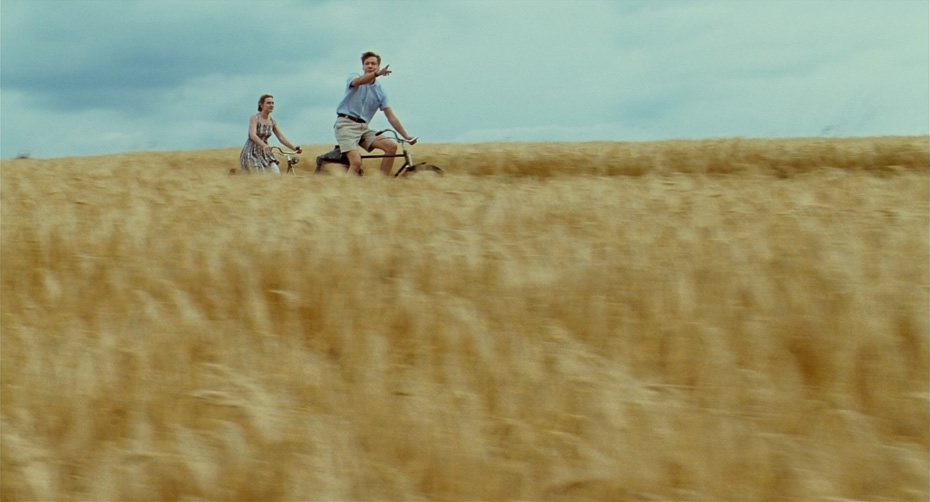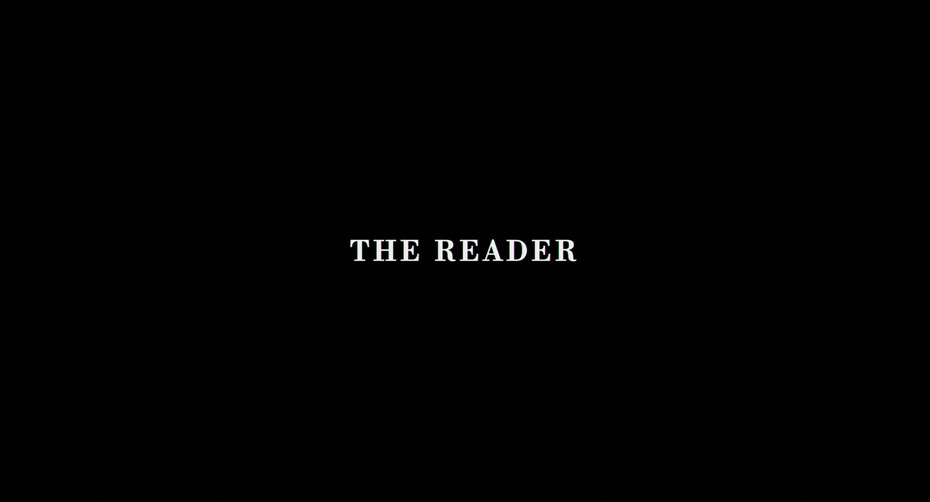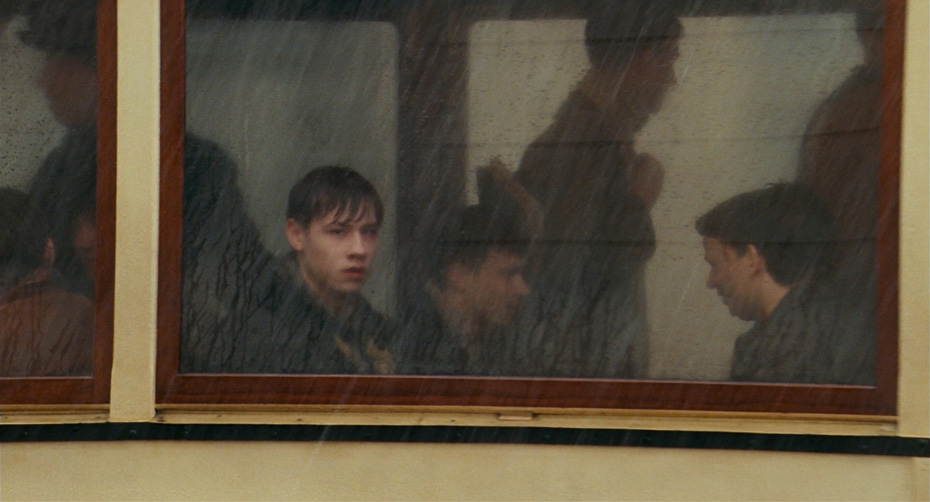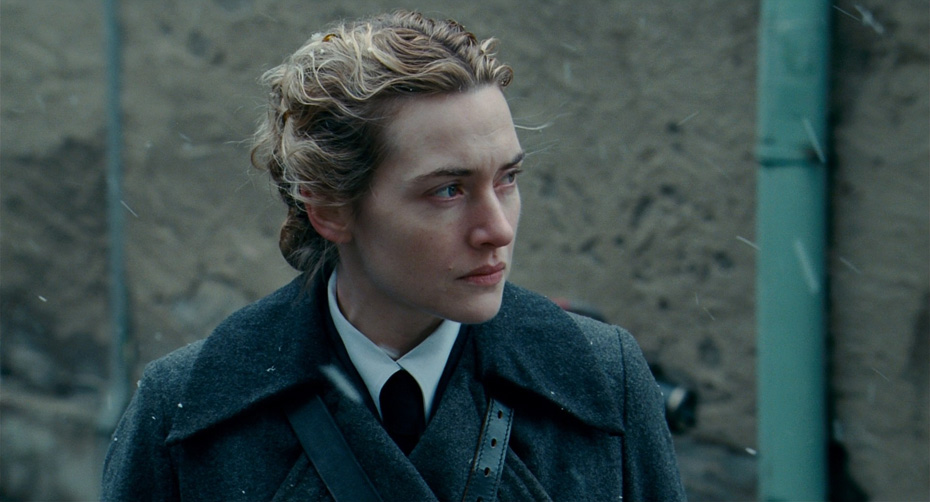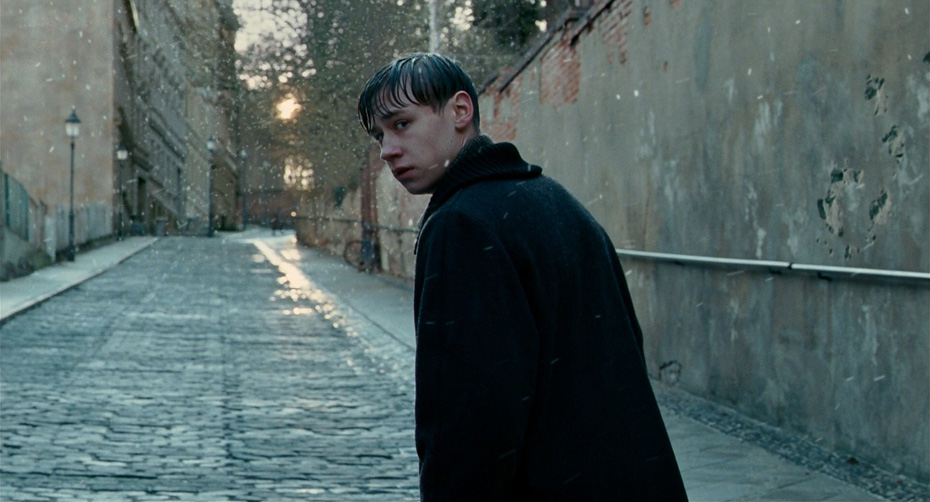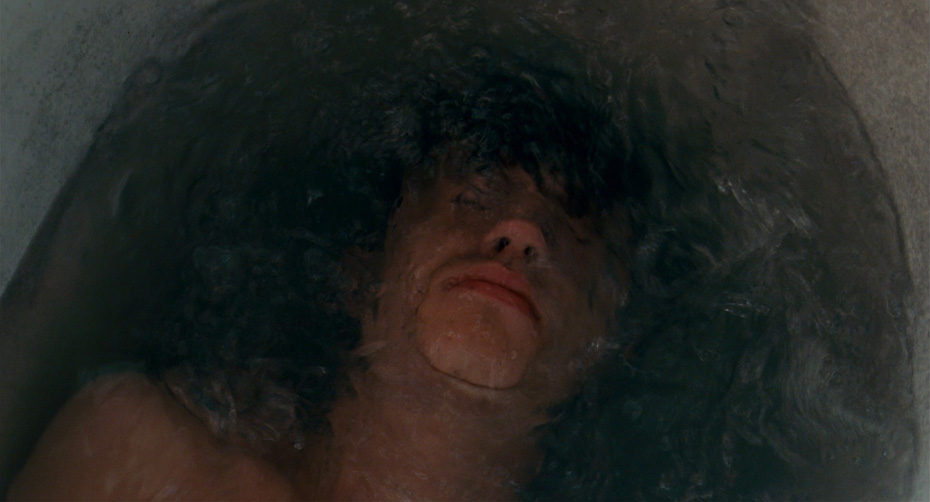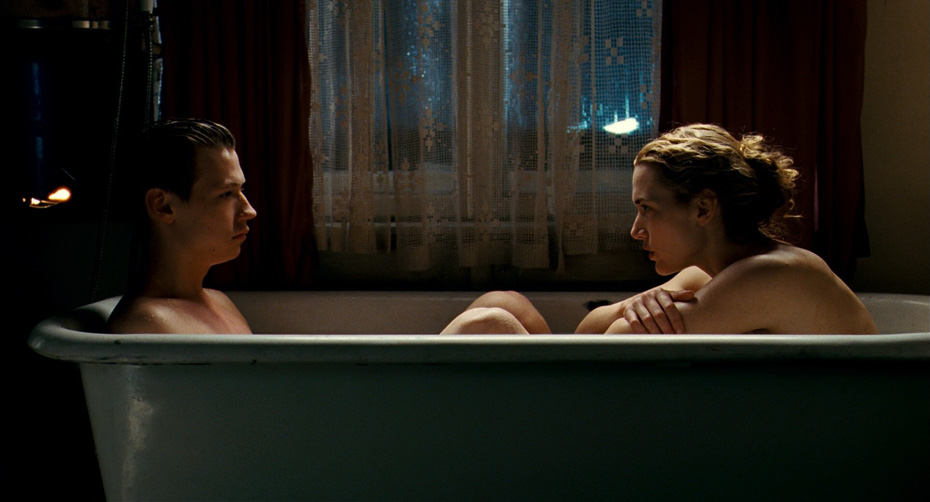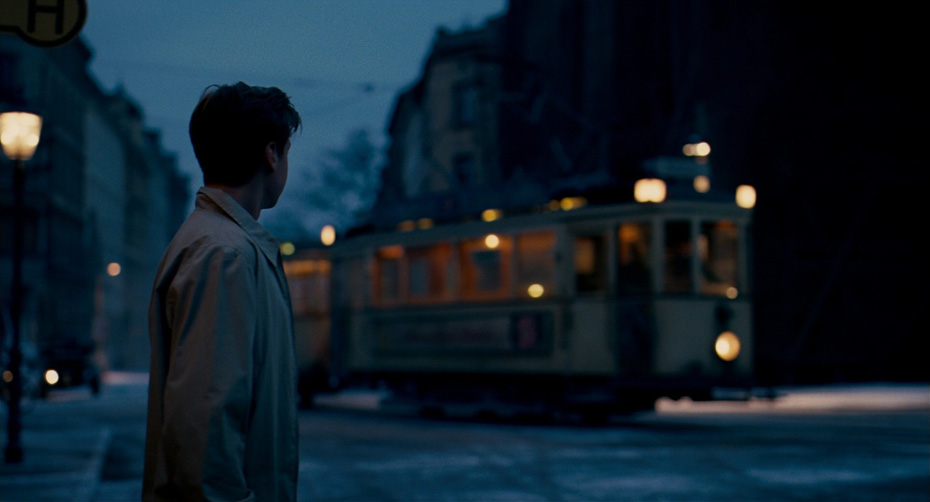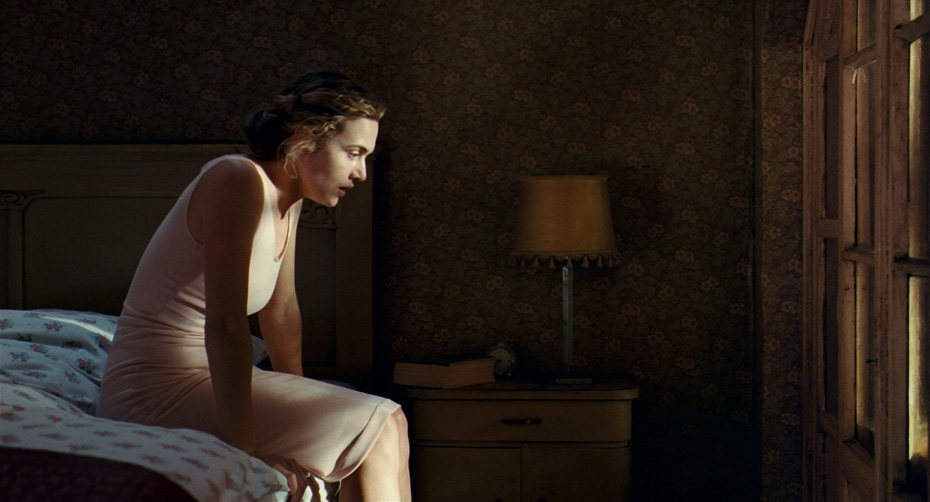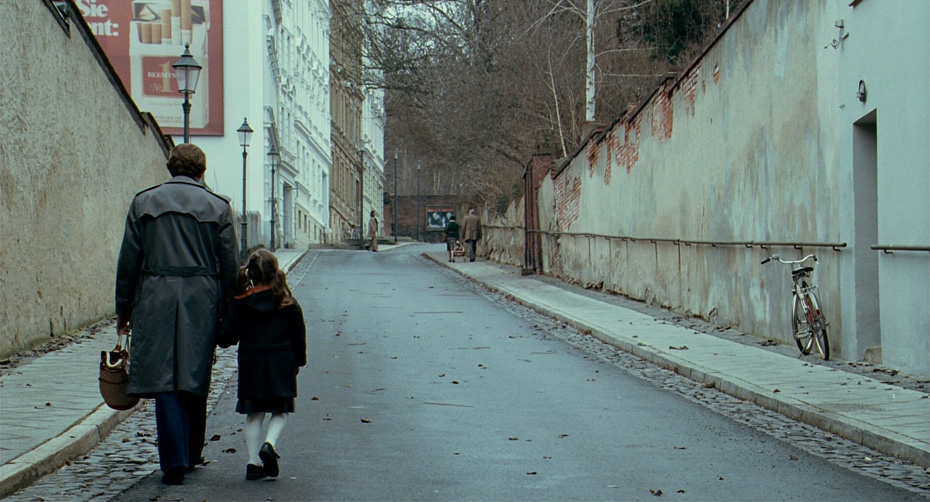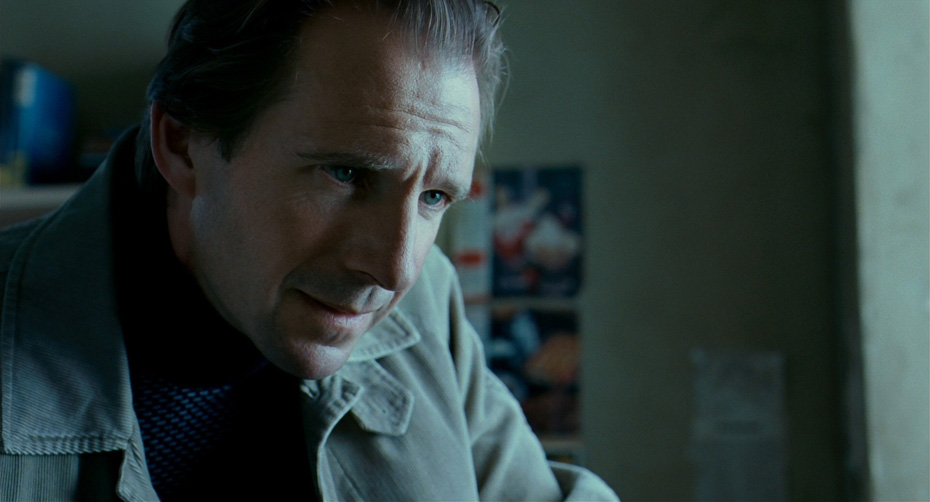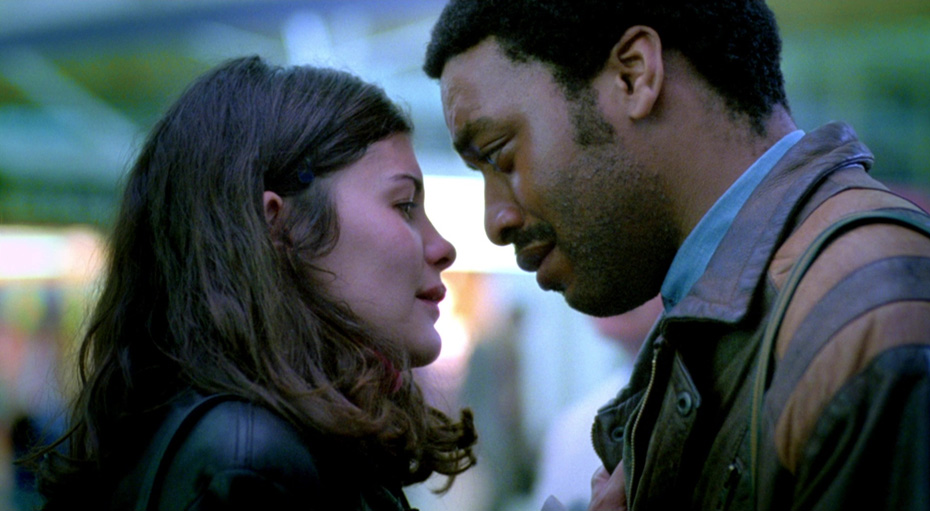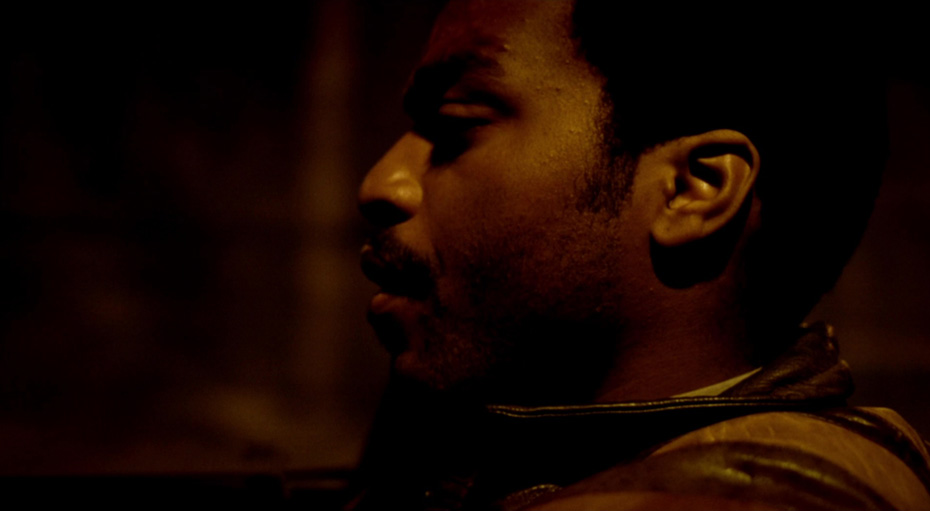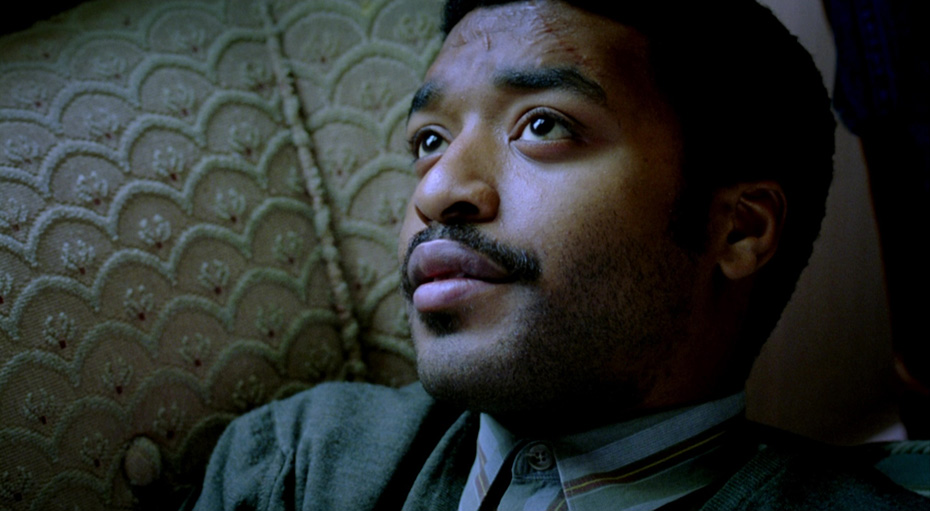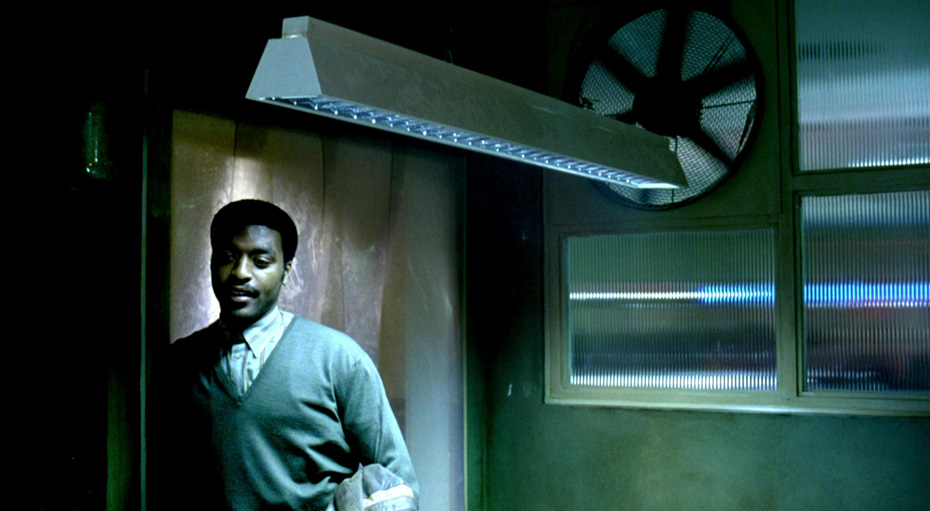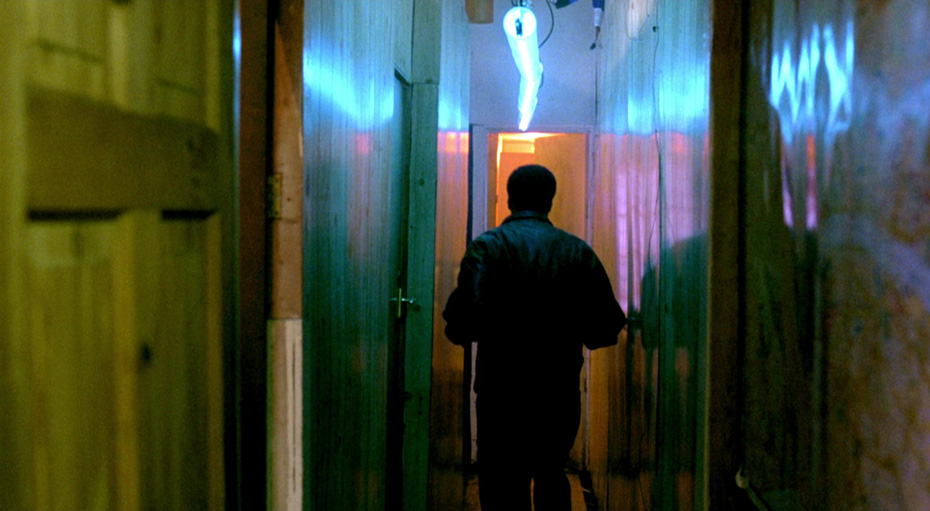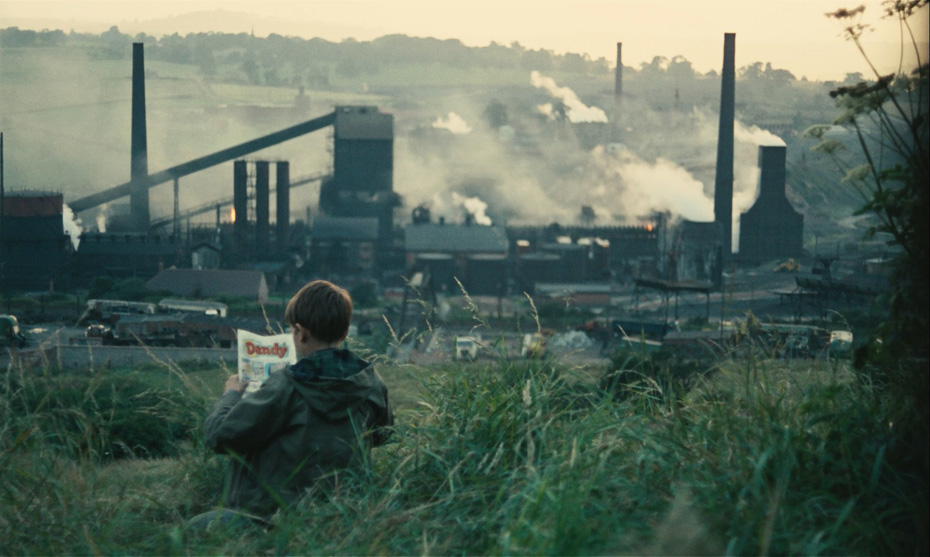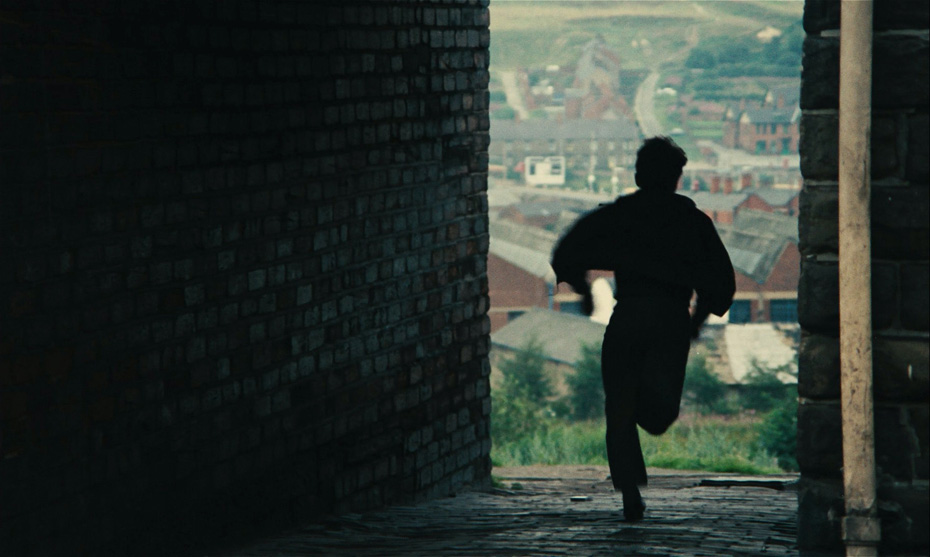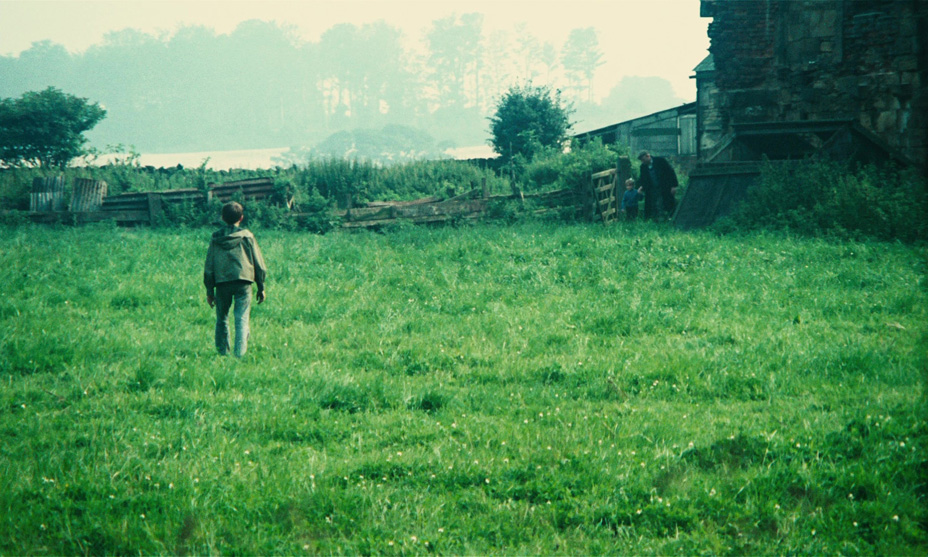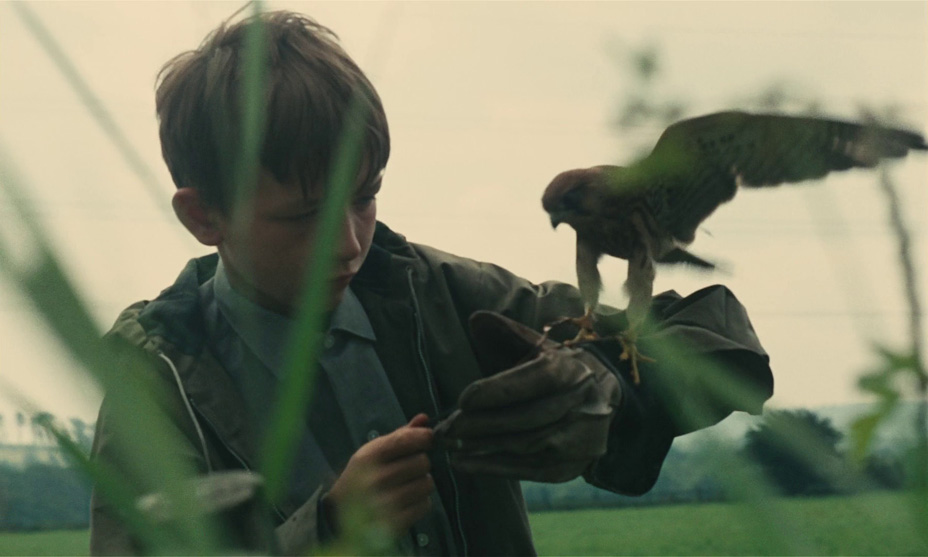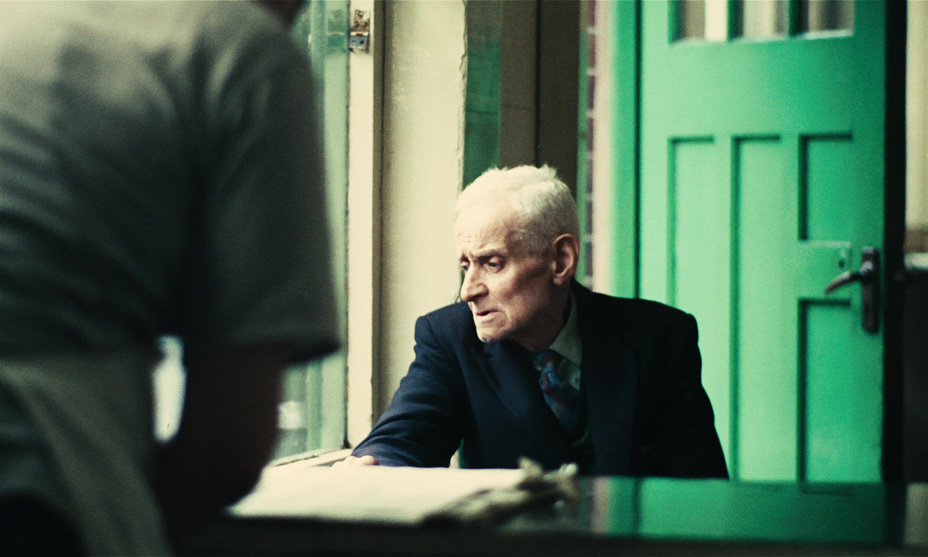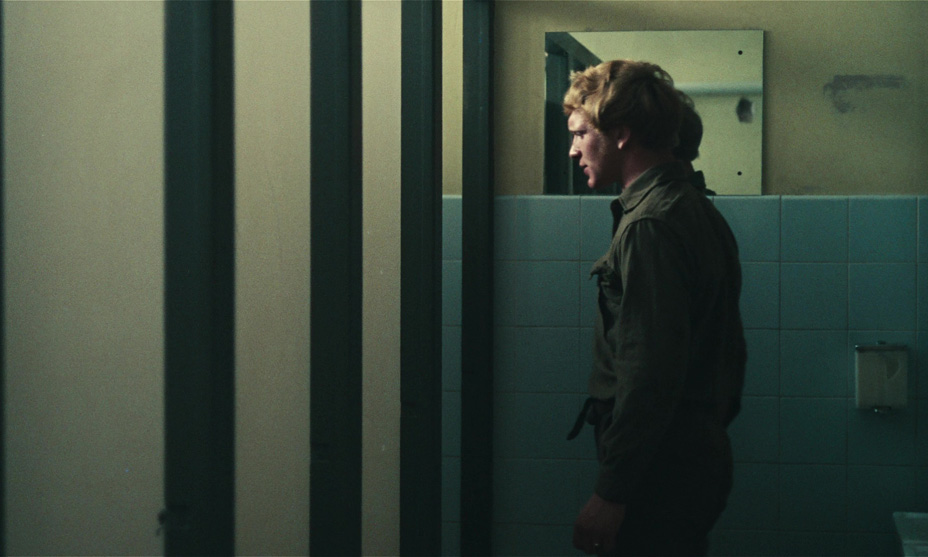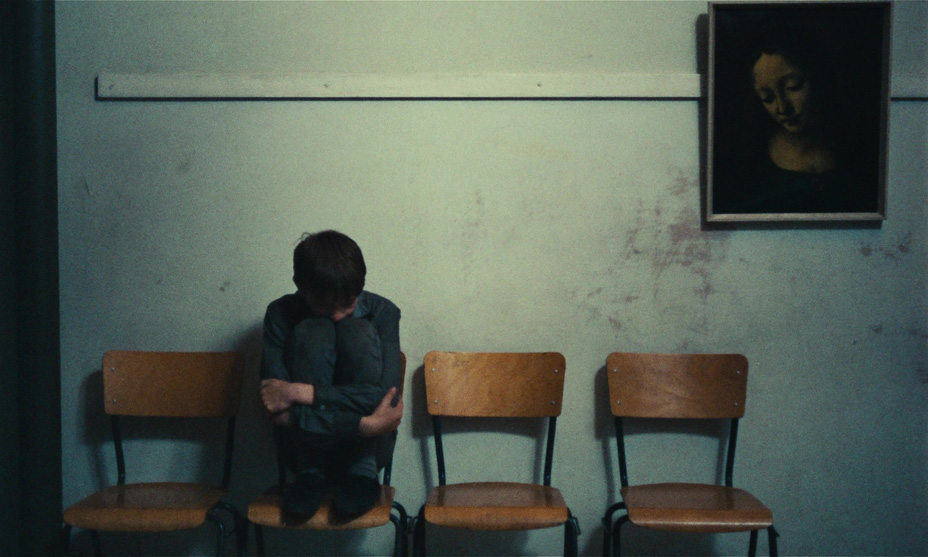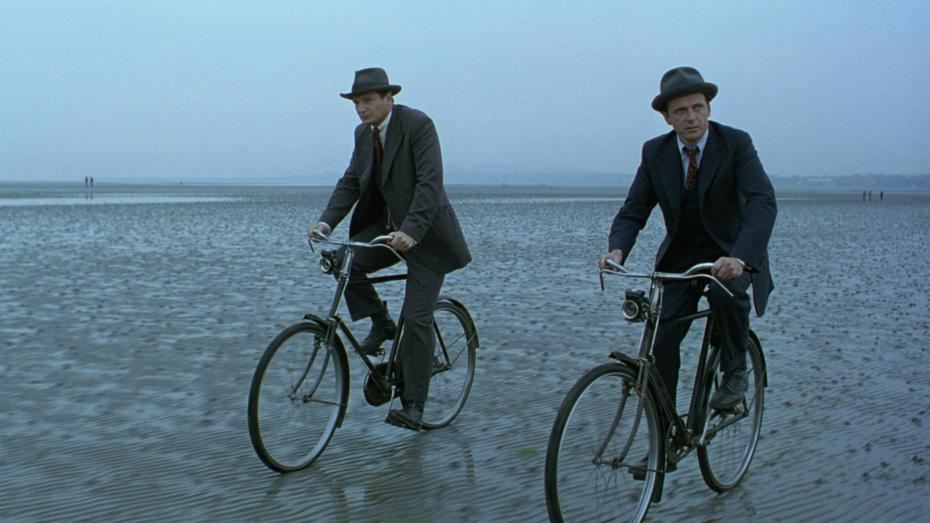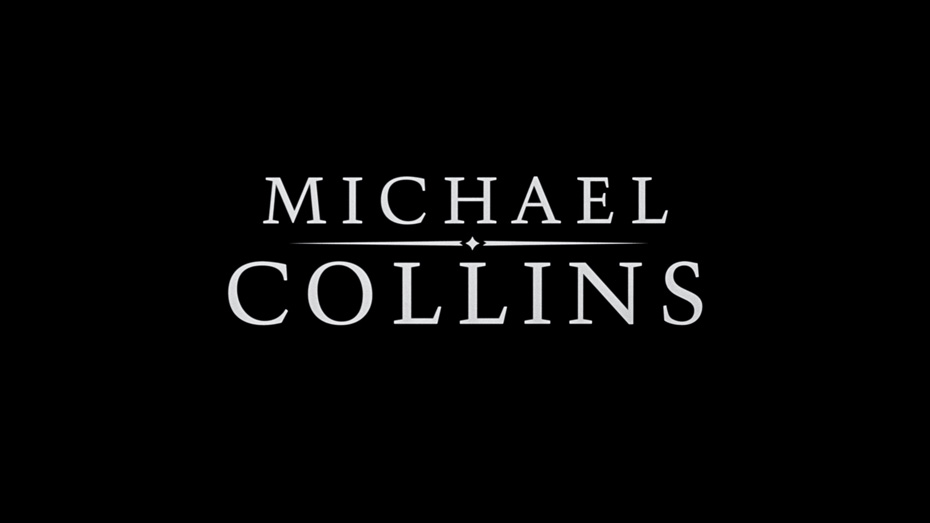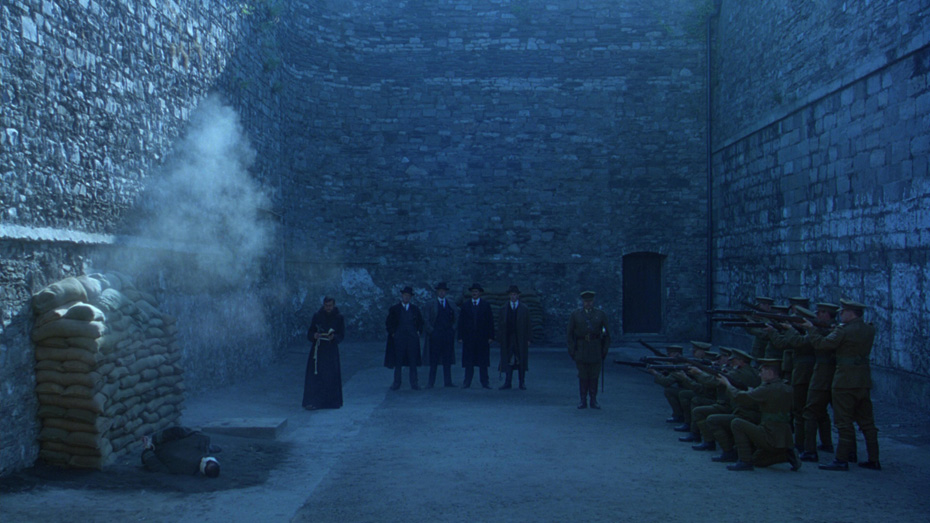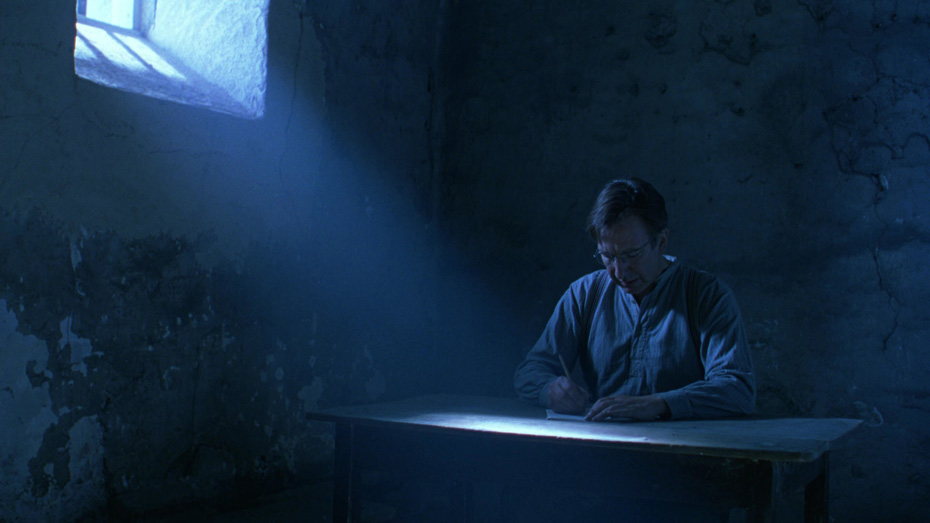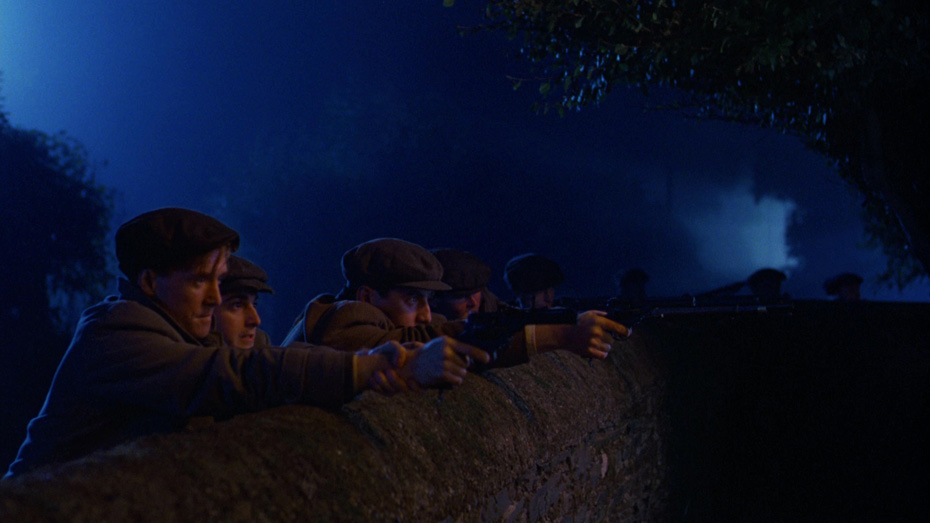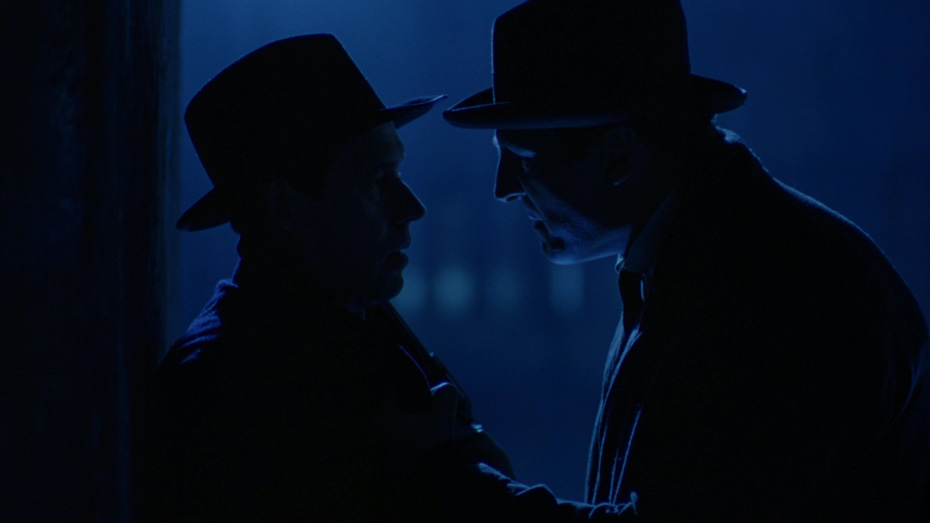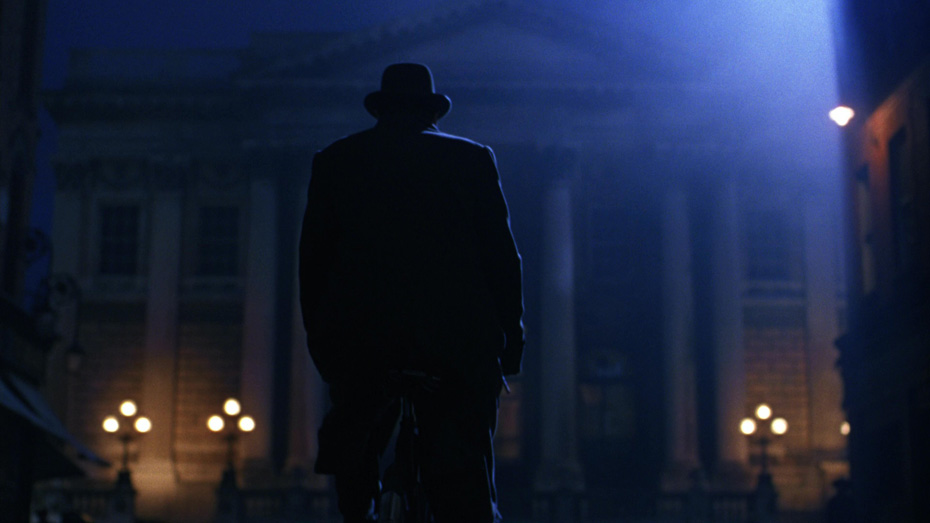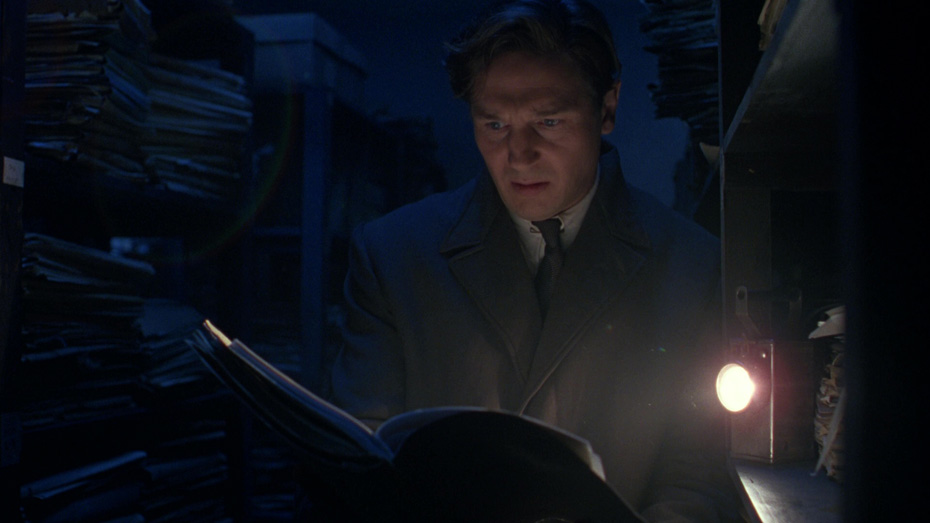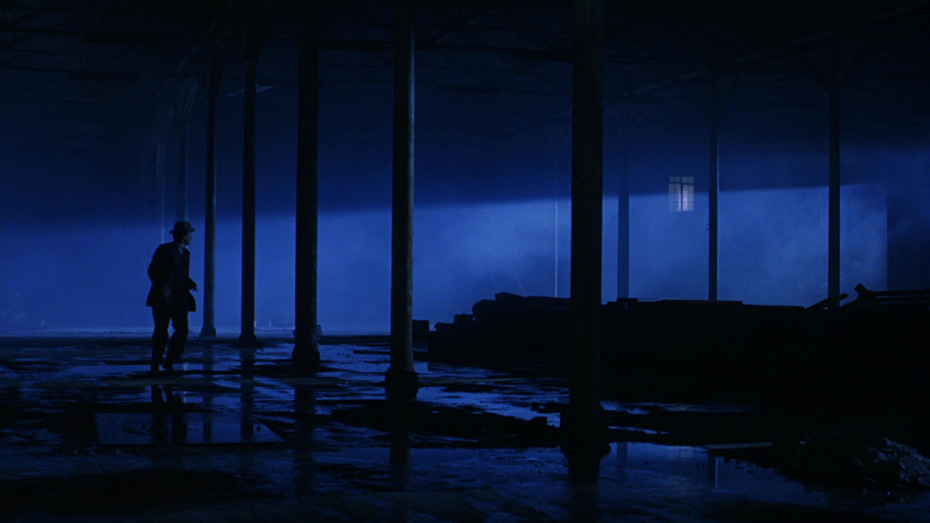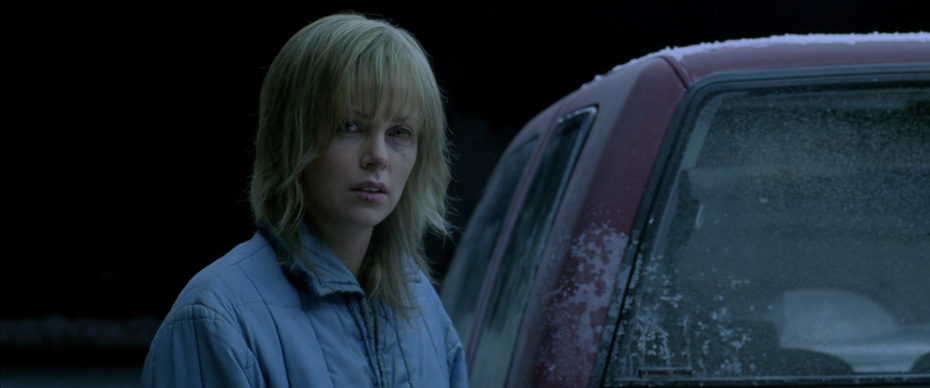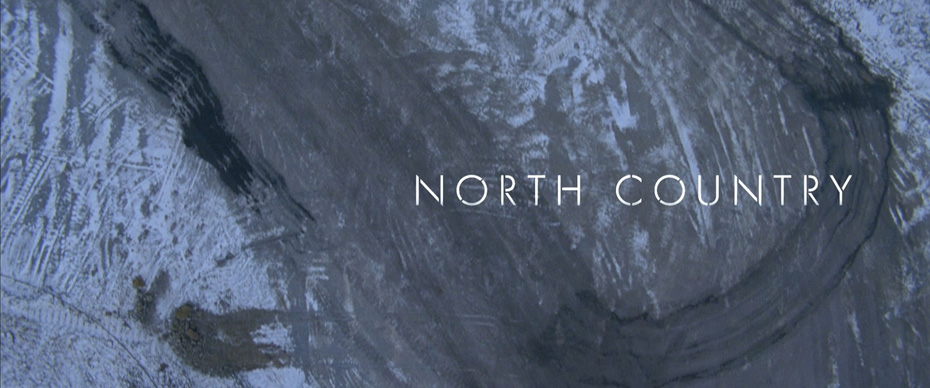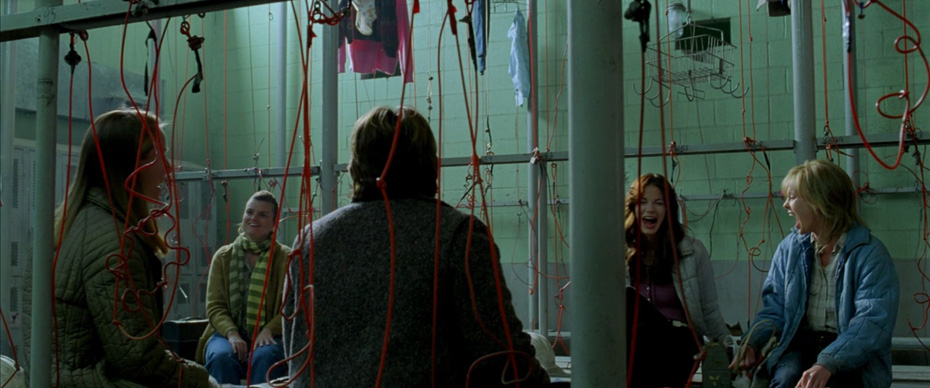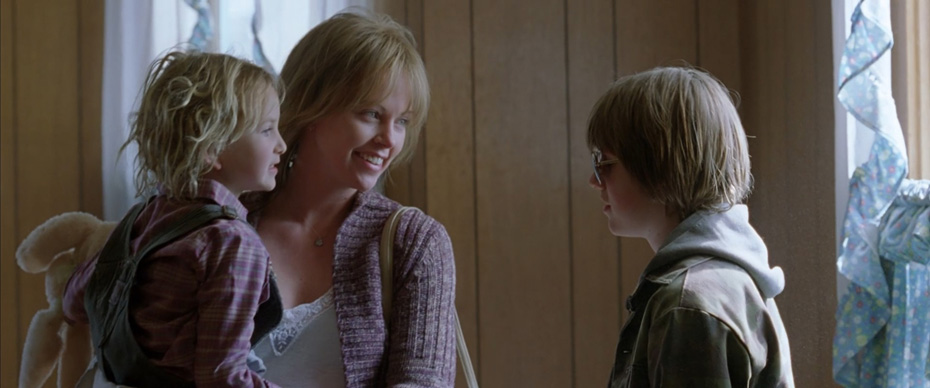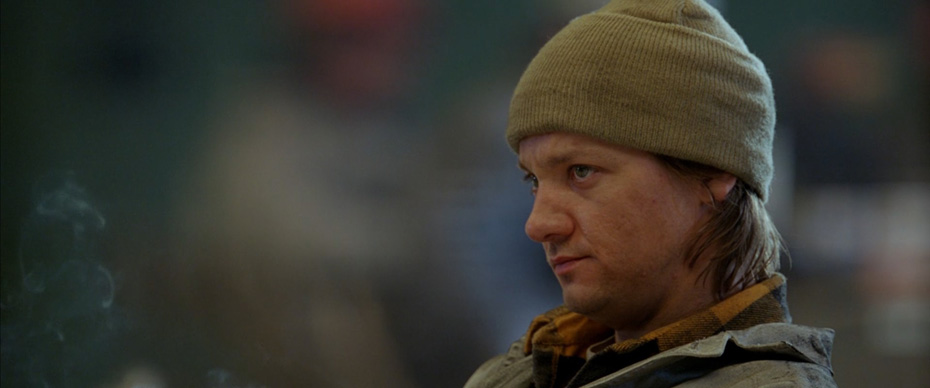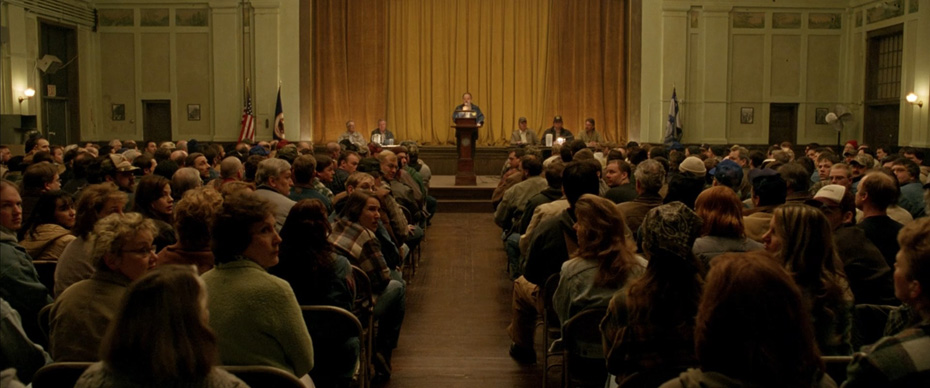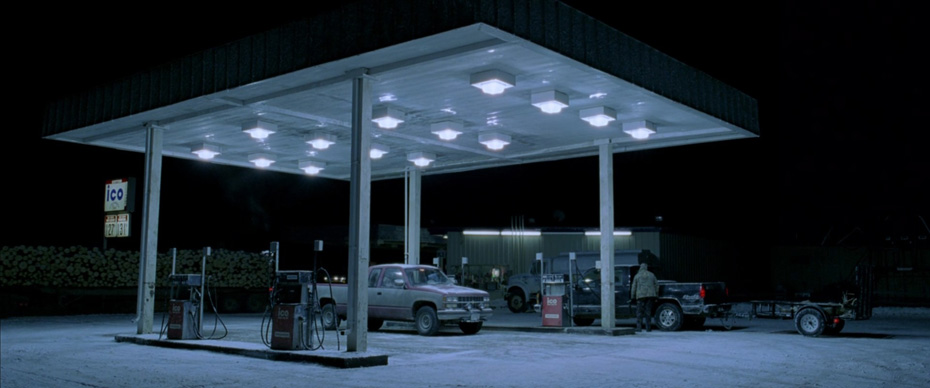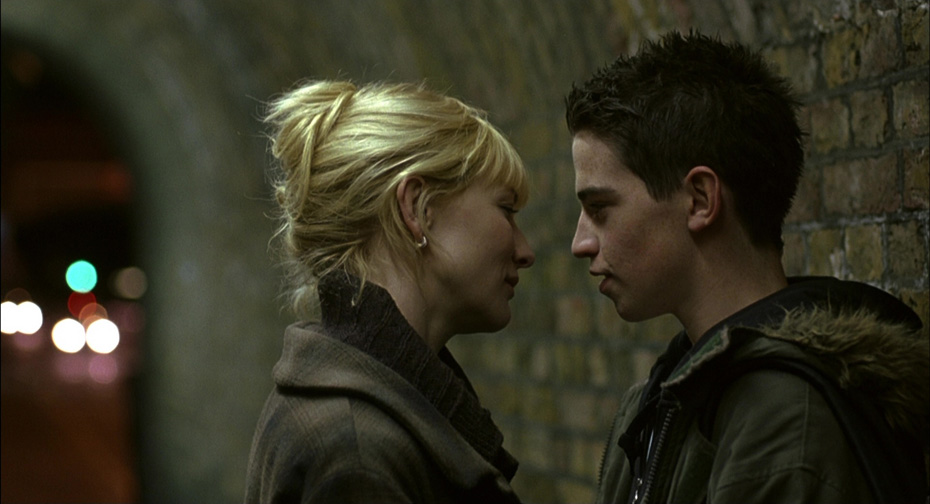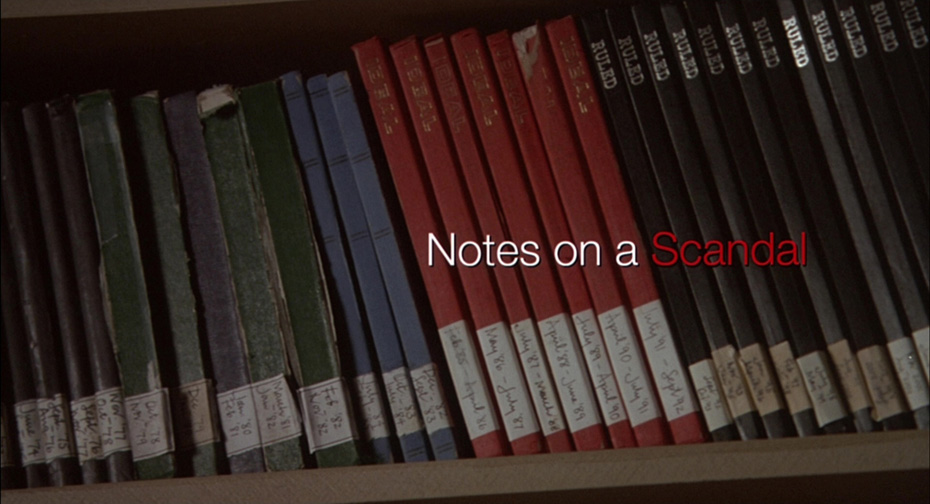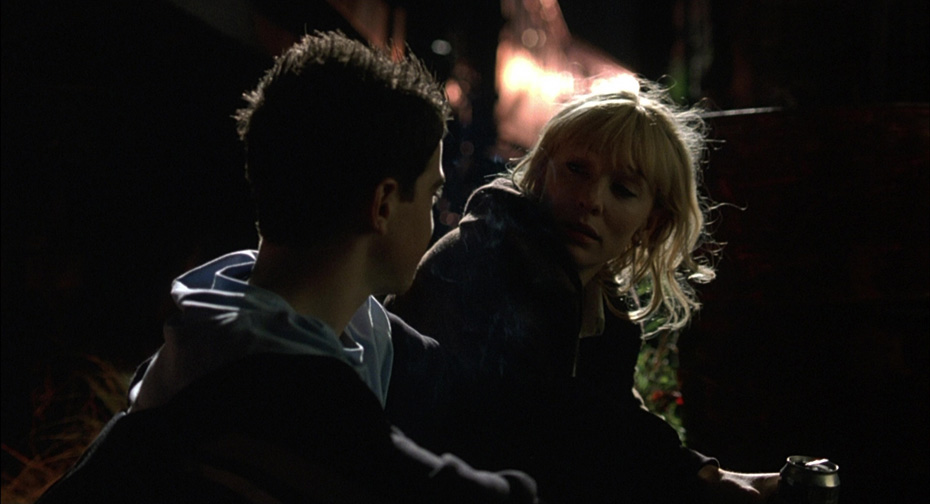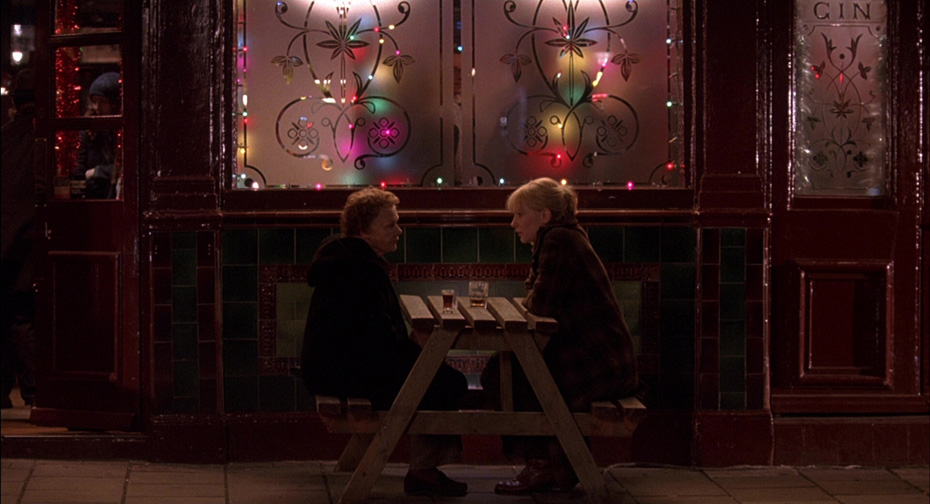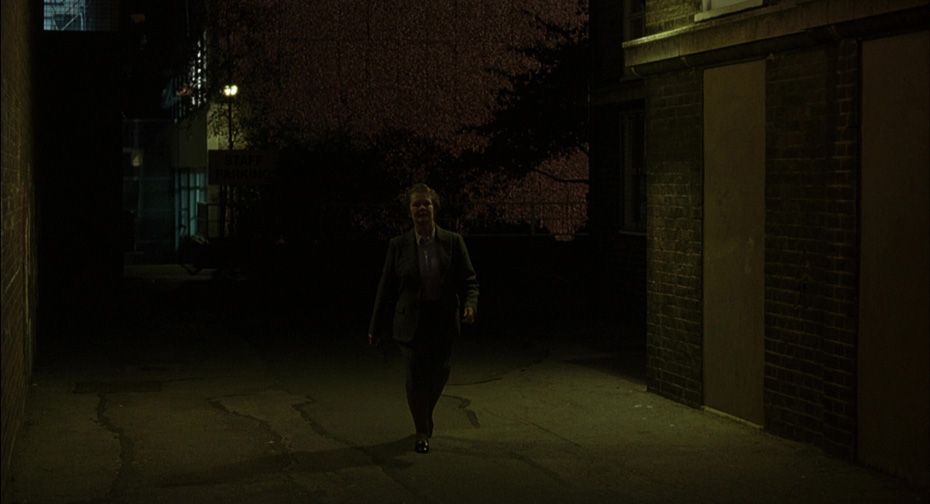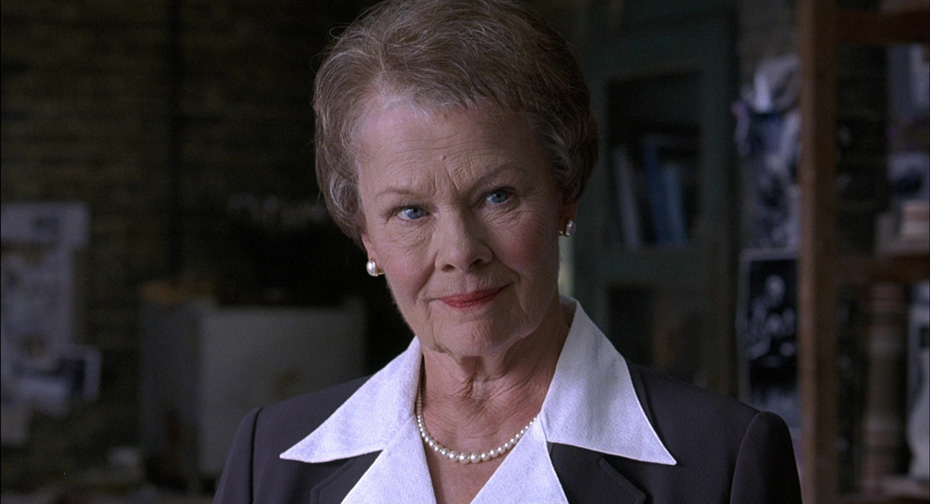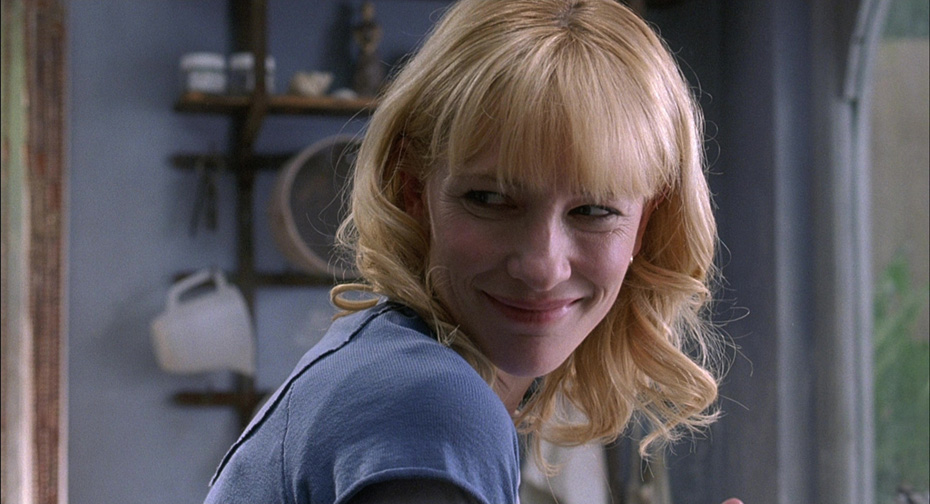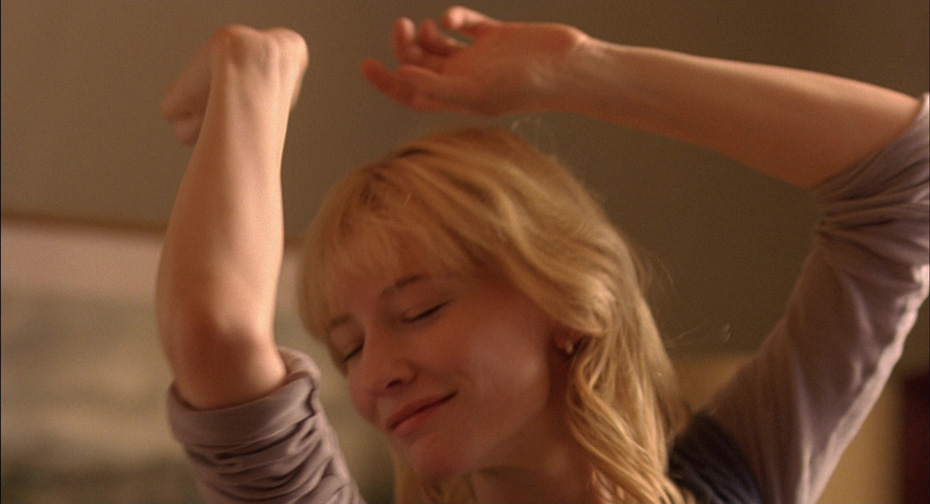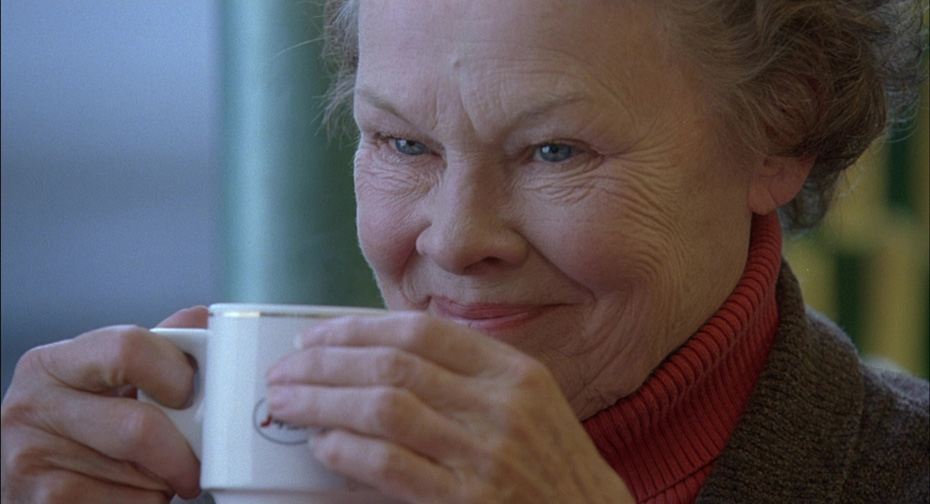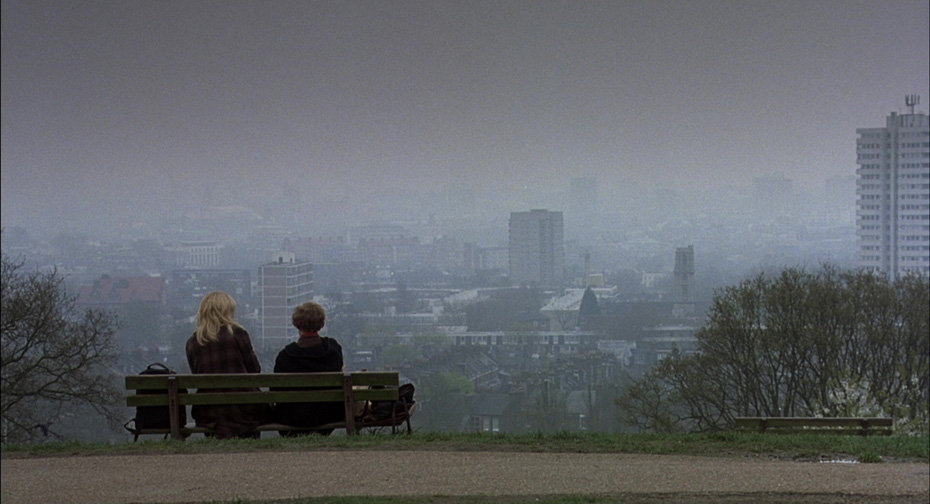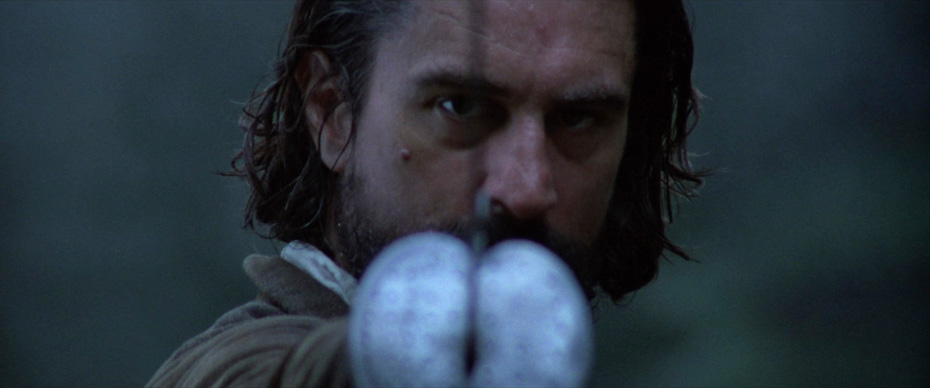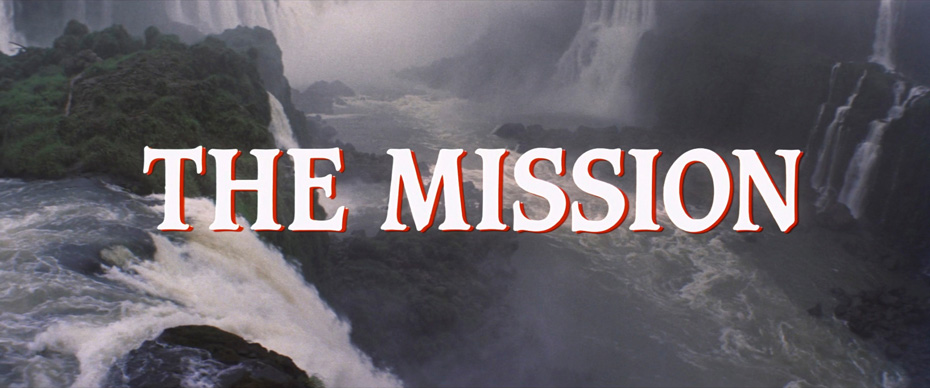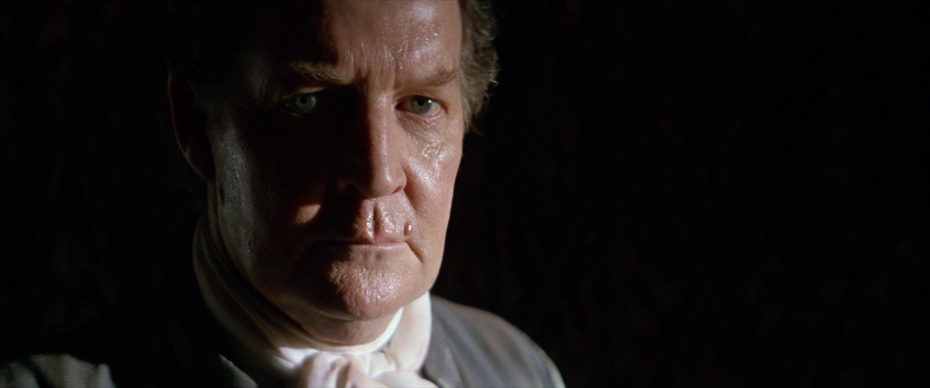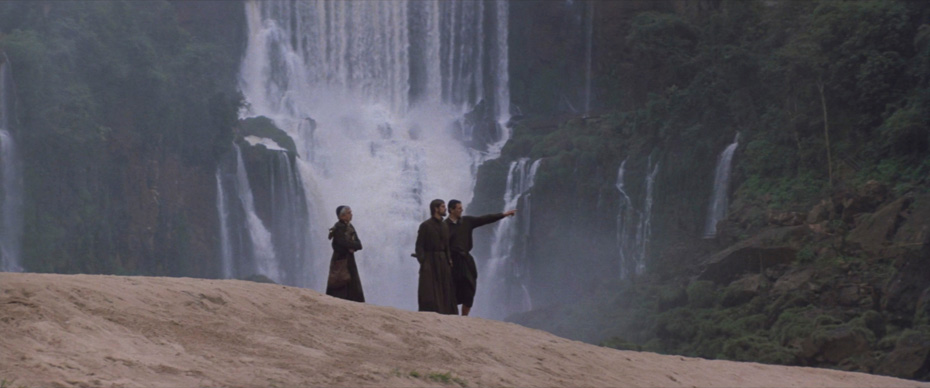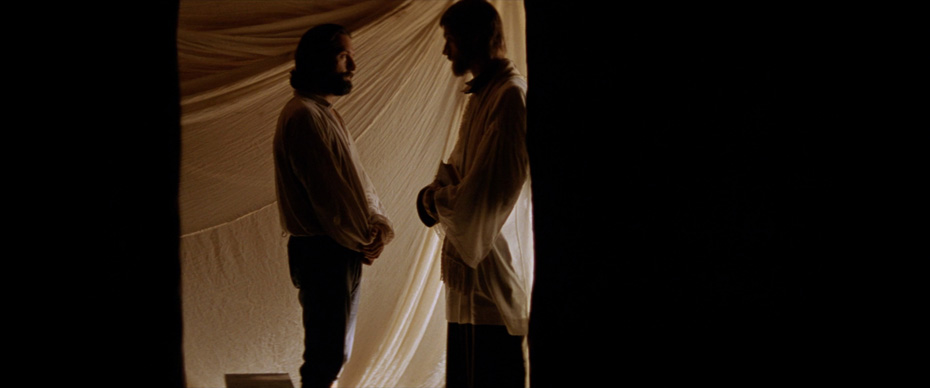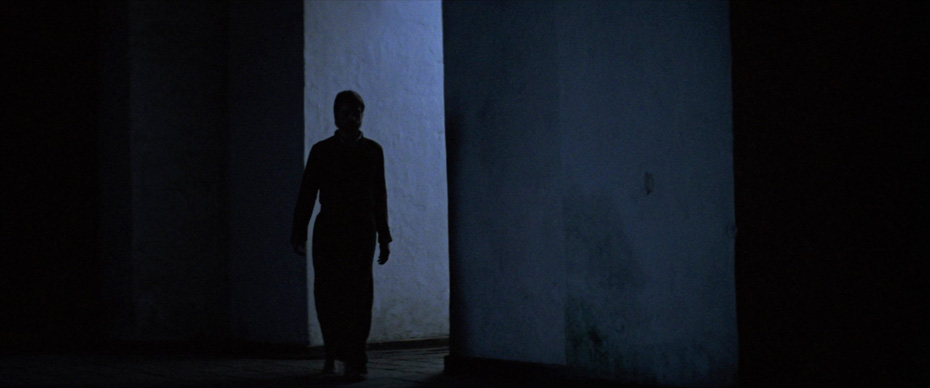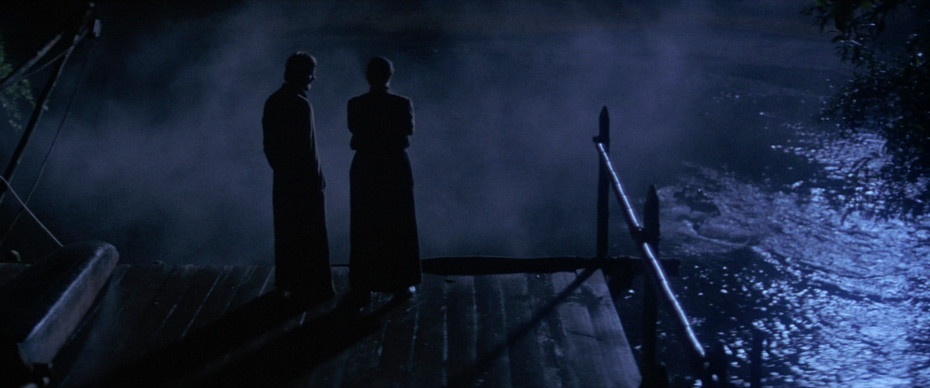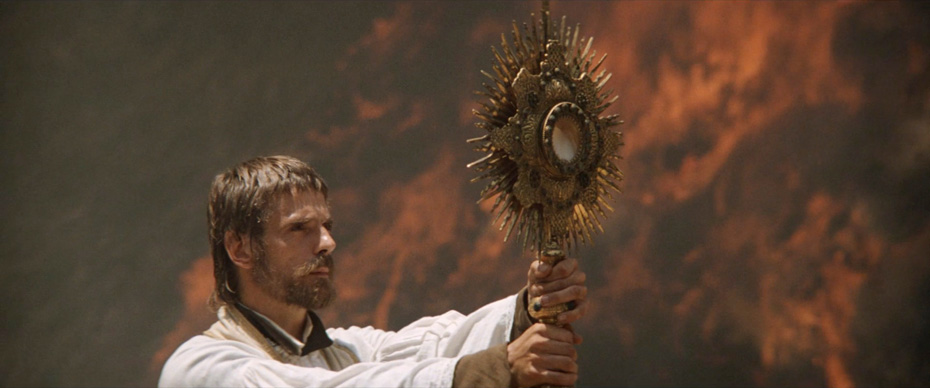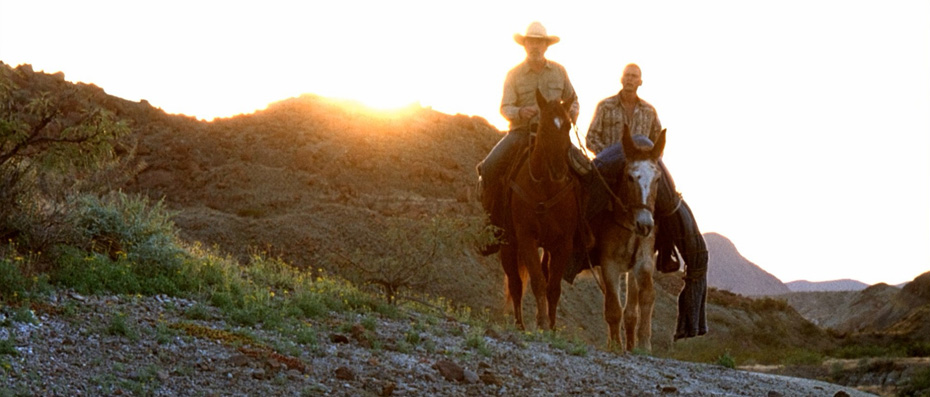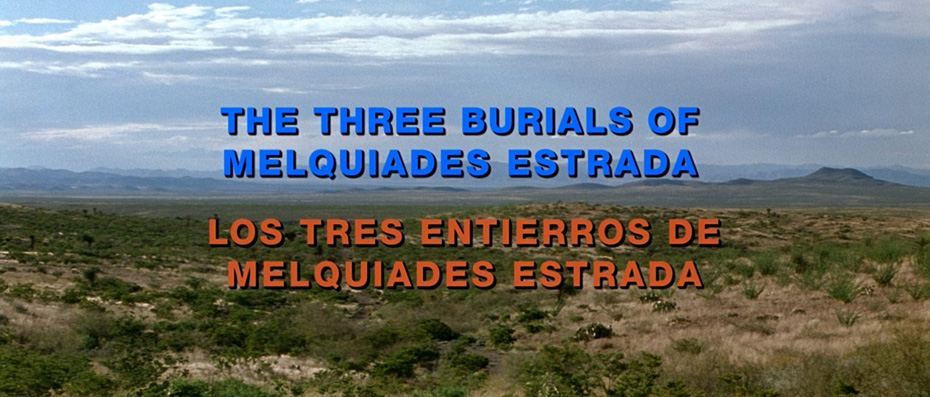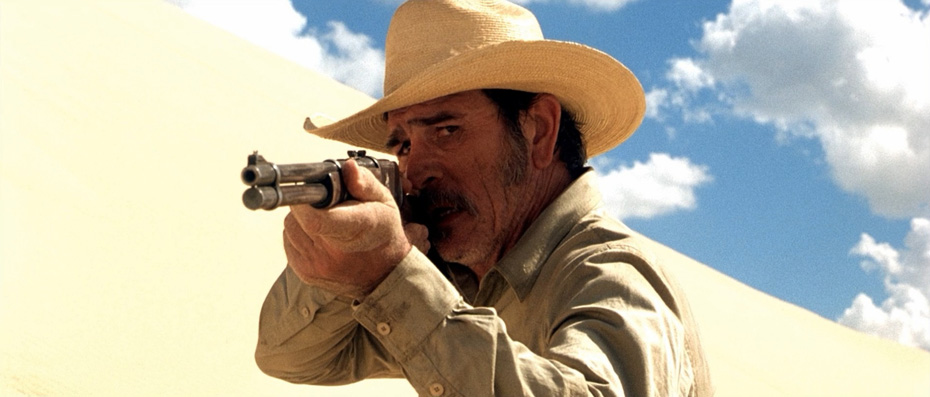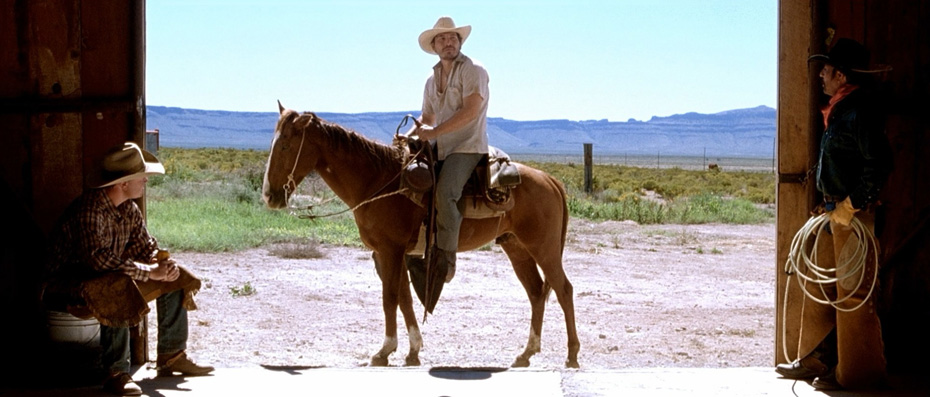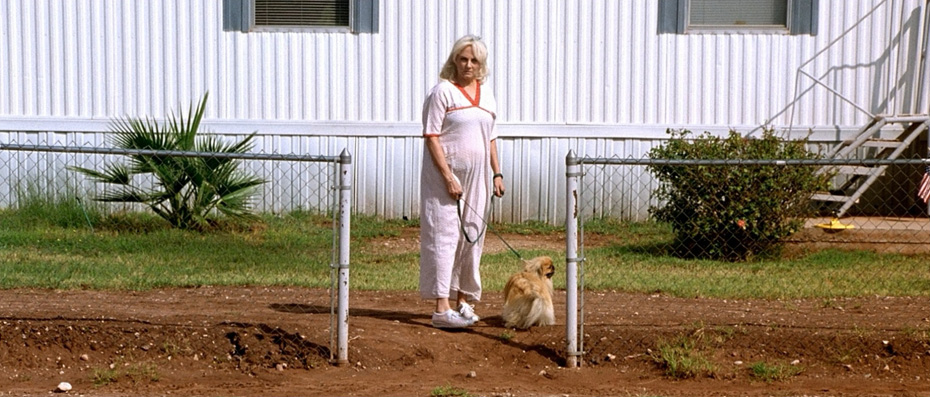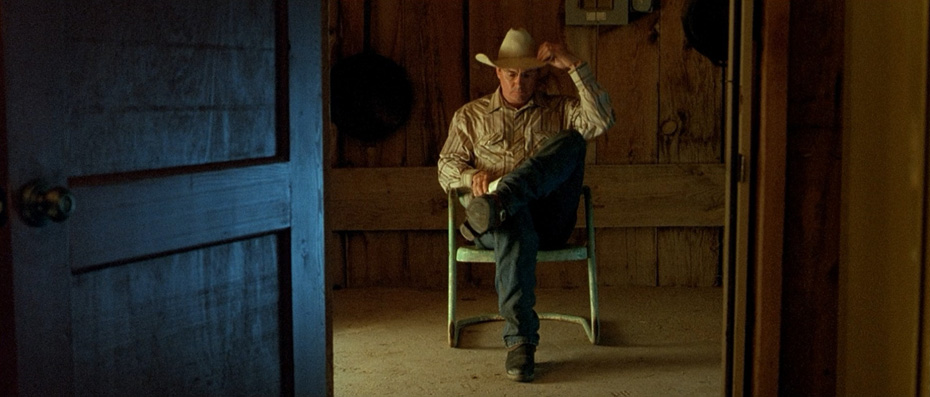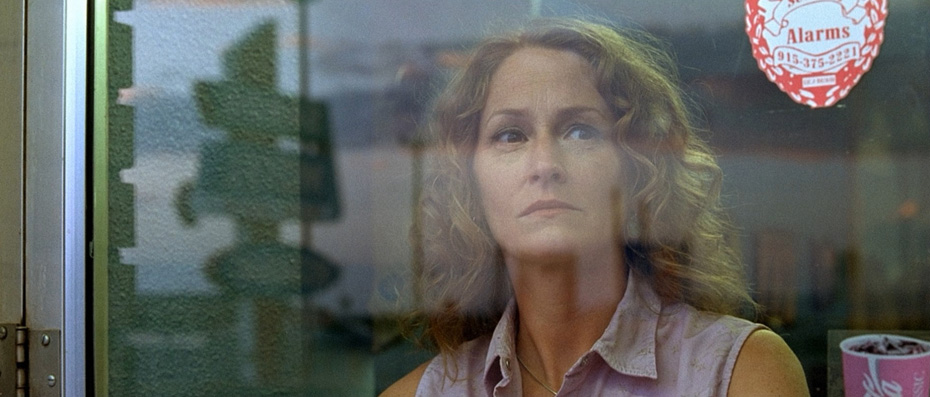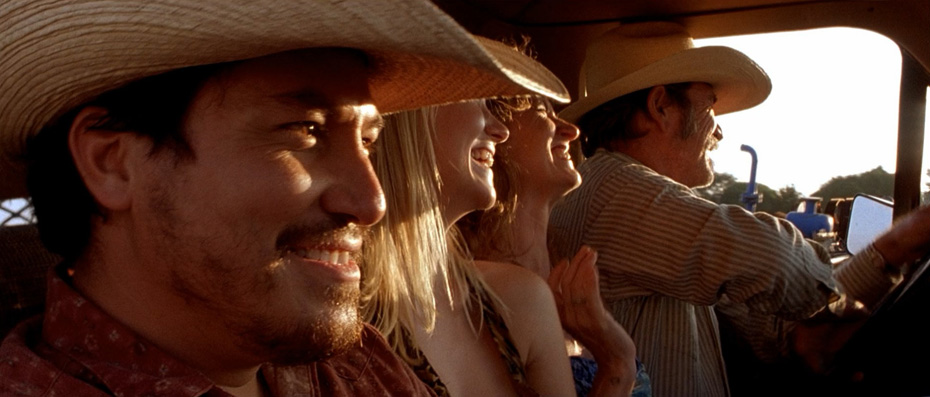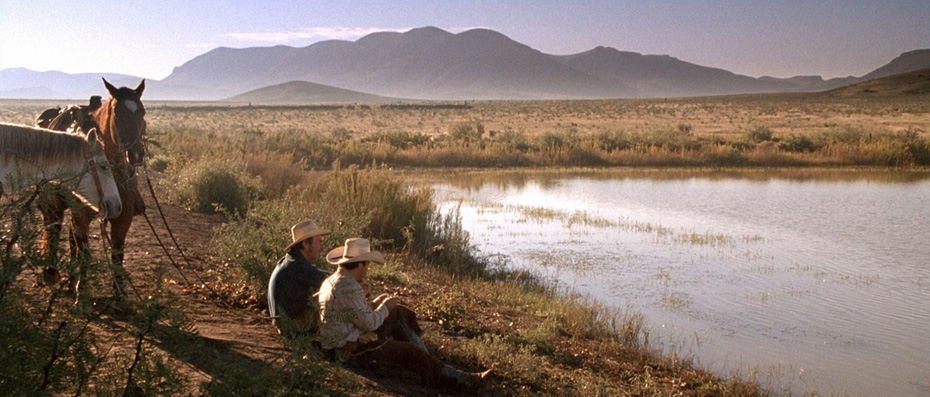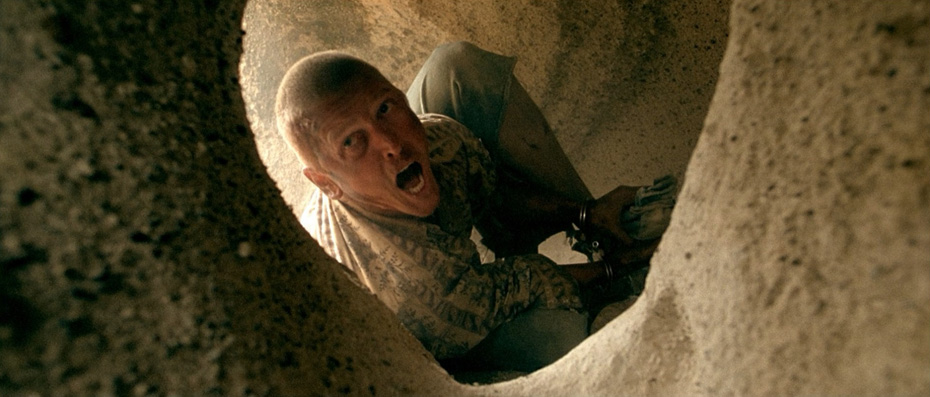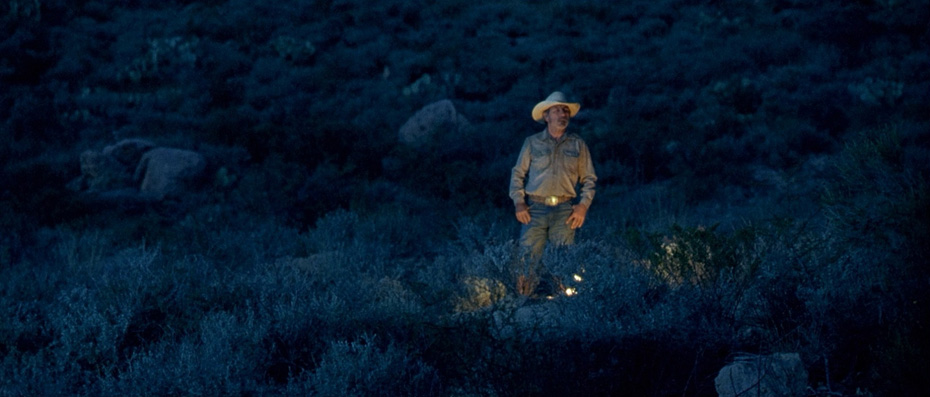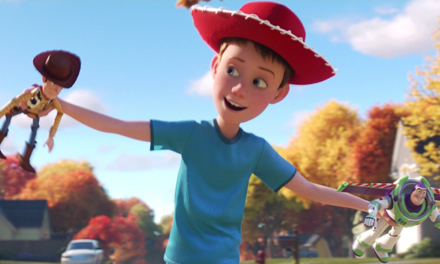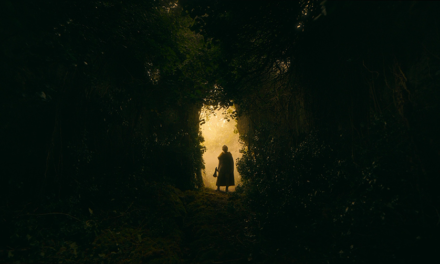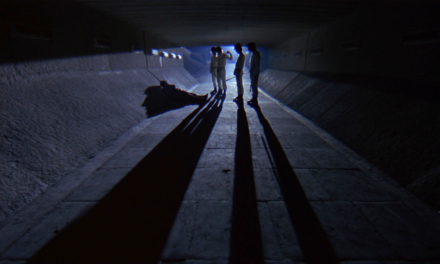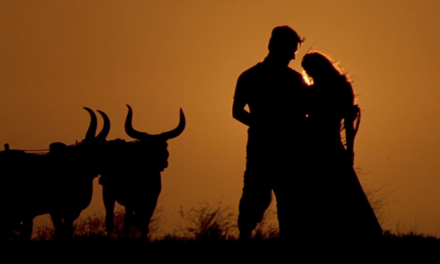THE TUESDAY DROP: 5,900+ New Shots
01.17.23 Get your Decks ready ShotDeck Community! We’re adding a ton of new films this week, including new films from 2022, ten films by legendary British DP Chris Menges, BCS, ASC and the complete first season of The White Lotus. Remember you can always request titles for future drops by clicking here!
GLASS ONION: A KNIVES OUT MYSTERY is a 2022 American mystery film written and directed by Rian Johnson. It is the standalone sequel to the 2019 film Knives Out, and stars Daniel Craig reprising his role as detective Benoit Blanc, who is invited by tech billionaire Miles Bron (Edward Norton) to a getaway on his private Greek island along with a group of his closest friends. The film features an ensemble cast and also stars Janelle Monáe, Kathryn Hahn, Leslie Odom Jr., Jessica Henwick, Madelyn Cline, Kate Hudson and Dave Bautista. Glass Onion premiered at the Toronto International Film Festival. Johnson worked on the film with American Production Designer Rick Heinrichs. The pair had previously collaborated on Star Wars: The Last Jedi. Heinrichs’s other credits include Fargo, The Big Lebowski, Pirates of the Caribbean: Dead Man’s Chest and Sleepy Hollow.
Glass Onion takes place almost entirely at Miles’s Greek island mansion, and Heinrichs’s major task of the film was to work with Johnson to create a space that would both serve the character as well as the film’s needs for visual interest. Heinrichs started by conceptually designing the glass onion on top of the mansion from the outside, before considering its interior design. After some early designs, Heinrichs peeled back and sliced an onion to develop a concept for a compound shape, which allowed him to build a 3D model of the building. In figuring out how to actually build the structure, Heinrichs decided not to attempt to build compound curves on the glass, given both the cost and the ways that it would have felt less architectural. When the building was designed, Heinrichs and his team built the building using plywood for the glass in the UK. The plywood was then sent to a glass company, who cut it to the exact shape and delivered it to the soundstage in Belgrade where the shoot took place.
GUILLERMO DEL TORO’S PINNOCCHIO (or Pinocchio) is a 2022 stop-motion animated musical fantasy film directed by Guillermo del Toro and Mark Gustafson. Loosely based on the 1883 novel The Adventures of Pinocchio by Carlo Collodi, and influenced by Gris Grimly’s illustrations for the 2002 edition of the book, the film reimagines the story of Pinocchio, a wooden puppet who comes to life as the son of his carver Geppetto. The film stars the voices of Gregory Mann and David Bradley as Pinocchio and Geppetto, as well as Ewan McGregor, Ron Perlman, John Turturro, Finn Wolfhard, Cate Blanchett, Tim Blake Nelson, Christoph Waltz and Tilda Swinton. Pinocchio premiered at the BFI London Film Festival. Del Toro and Gustafson worked on the film with Production Designers Guy Davis and Curt Enderle, both of whom are longtime collaborators with del Toro.
The team began work on Pinocchio at the Portland, Oregon location of ShadowMachine in 2020, continuing through to 2022. As many as 60 small stages were operating simultaneously for the three years while the film was in production. Del Toro and Gustafson wanted a look for the film that was fantastical but remained grounded in a recognizable world, and wanted to empower the animators to feel like actors, working with them on sets calling “action” and “cut” in order to allow them to demonstrate choices in performances the same way that they would work with actors in a live-action setting. Pinocchio was then partially created with replacement animation, which head of puppet fabrication Georgina Hayns explained as a consequence of making it clear that Pinocchio appeared to be made out of wood, and not compromising on this when most of the other characters had their faces made out of silicone to allow for more depth of emotional expressions in each face built. Pinocchio’s faces were created with a 3D printer as a baseline, and then animated for more specificity.
BARDO, FALSE CHRONICLES OF A HANDFUL OF TRUTHS (also known as Bardo), is a 2022 Mexican epic dark comedy-drama film co-written, co-composed, edited, produced and directed by Alejandro González Iñárritu. The film stars Daniel Giménez Cacho as a renowned Mexican journalist and documentary filmmaker who returns home and works through an existential crisis as he grapples with his identity, familian relationships and his memories. The film also stars Griselda Sicilliani, Ximea Lamadrid, and Andrés Almeida. Bardo was the first film of Iñárritu’s career to be fully filmed in Mexico since Amores perros in 2000, and premiered at the Venice International Film Festival, where it was nominated for the Golden Lion. Iñárritu worked on Bardo with Iranian-French cinematographer Darius Khondji, in the pair’s first collaboration. Khondji’s credits include Uncut Gems, Se7en, The Immigrant and Amour. Khondji won a Silver Frog at Cameraimage for his work on the film.
Iñárritu and Khondji spoke early on about the film being one constructed of dreams and emotions, not necessarily with rational structure and logic, and the necessity of conveying this in the visual language of the movie. Khondji wanted the camera to have “liquidity” in its movement, floating through spaces with a dream-like quality that could move fluidly from wide shots to extreme close-ups and back within a single shot. Khondji sometimes had shots filmed on a 65mm or 70mm lens that had to move in 360 degrees using a crane in a tiny apartment, creating a huge technical challenge for him and his team to light environments naturally while hiding sources. He and Iñárritu extensively rehearsed shots in pre-production, carefully planning shots so that they could be executed on set in conjunction with the rest of the cast and crew.
WHITE NOISE (2022)
WHITE NOISE is a 2022 absurdist comedy-drama written and directed by Noah Baumbach, adapted from the 1985 novel of the same name by Don DeLillo. The film stars Adam Driver, Greta Gerwig, Don Cheadle, Raffey Cassidy, Sam Nivola, and May Nivola. Set in the 1980s, the movie follows the life of an academic (Driver) and his family when an air contamination accident occurs near where they reside. White Noise premiered at the Venice International Film Festival, before playing at the Mill Valley Film Festival and the New York Film Festival. Baumbach worked on the film with American costume Designer Ann Roth, with whom he had previously worked on Margot at the Wedding and While We’re Young.
Roth collaborated closely with Production Designer Jess Gonchor and hair and makeup head Mia Neal from the outset of pre-production, developing a look for the film that would work in concert with Baumbach’s vision. Roth asked Gonchor for three images that defined the look of film as a base to work off, suggesting Production Design changes that could work alongside the period-specific but hyperreal tone of the film. From there, Roth worked closely with Baumbach to design costumes based on his ideas for the clothes the characters would wear, drawing on her racks of authentic ‘80s clothing to evoke a mood and style that was essential to the storytelling of the film.
THE WHITE LOTUS: SEASON 1 (2022)
THE WHITE LOTUS is an American dark comedy anthology series created by Mike White. Season 1 of the series follows the guests and employees of the White Lotus resort in Hawaii, following their decadent and dysfunctional habits and relationships, and unraveling the picture-perfect exterior of their lives. Season 1 stars Murray Bartlett, Connie Britton, Jennifer Coollidge, Alexandra Daddario, Fred Hechinger, Jake Lacy, Brittany O’Grady, Natasha Rothwell, Sydney Sweeney, and Steve Zahn. Season 1 premiered on HBO in 2021 and received ten Primetime Emmy Awards, including Outstanding Limited or Anthology Series, Outstanding Writing, Outstanding Directing (both White), Outstanding Supporting Actress (Coolidge) and Outstanding Supporting Actor (Bartlett). White worked on the series with American Production Designer Laura Fox, whose credits include Troop Zero and 500 Days of Summer.
White gave Fox a brief that the design of the hotel should feel like “The Madonna Inn and The Four Seasons having a baby”, aiming for a mood that takes tasteful decor and pushes everything just a bit too far. Fox and her team, led by art director Charles Varge and set decorator Jennifer Lukehart, started with sourcing and ordering fabric that could help convey the sense of excess, sourcing art from Polynesian artist Herb Kawainui Kāne in the process. The production took place at a Four Seasons hotel, and Fox and her team replaced items and stitched in as many of their own designs and fabrics as possible without painting or permanently changing the rooms. The decisions initially made for the overall design of the space led Fox and the team to design spaces that were an extension and a complement to the characters occupying them (such as the lower ceilings moving from the palm suite to the pineapple suite). Fox’s experience of production shooting at an actual hotel ended up informing the design, allowing her and the team to show the unglamorous side of the hotel in equal measure to its most luxurious spaces.
LOCAL HERO (1983)
LOCAL HERO is a 1983 Scottish comedy-drama written and directed by Bill Forsyth and starring Peter Riegert, Denis Lawson, Fulton Mackay and Burt Lancaster. The film follows up-and-coming Houston oil executive “Mac” (Riegert), who is sent to a small town in Scotland by his boss Felix Happer (Lancaster) to buy out the townspeople to build a new refinery, and then starts questioning his intentions when he arrives. Local Hero grossed close to $6 million worldwide from its $2.6 million budget, and earned a BAFTA award in the Best Direction category. Today, it is widely considered one of the most important Scottish films of the 20th century. Forsyth worked on the film with British cinematographer Chris Menges, who is also known for his work on films such as Dirty Pretty Things, I Love You Phillip Morris, Snatch and The Truth About Charlie.
Local Hero was filmed on location across Scotland. Forsyth and Menges wanted the visual language of the film to be reflective of Mac’s shifting perspectives over the course of the story. They paid particular attention to highlighting the natural beauty of the Scottish landscape, in keeping with the socio-political and environmental themes of the film. Menges shot much of the film in low light, capturing dawns and dusks that created a soft, natural quality to the light as well as deep pinks, blues and oranges in the film’s palette. The pair also gave space for comedy in the visual language, using lighting plans as storytelling devices (such as when a beach full of villagers follow a mysterious light in the sky, only to be revealed as Happer’s helicopter).
THE KILLING FIELDS (1984)
THE KILLING FIELDS is a 1984 British biographical drama directed by Roland Joffé and written by Bruce Robinson, based on The Death and Life of Dith Pran, which chronicled the experiences of Cambodian journalist Dith Pran and American journalist Sydney Schanberg. The film stars Sam Waterston as Schanberg, a New York Times reporter covering the Cambodian Civil War with the help of local interpreter and journalist Pran (Haing S. Ngor) and American photojournalist Al Rockoff (John Malkovich). When the US Army pulls out amid escalating violence, Pran tells Schanberg that he will stay to help cover the story rather than leave with his family, just as Khmer Rouge rebels move in. The Killing Fields grossed over $34 million from its $14.5 million budget, earning seven Academy Award nominations and winning in the Best Supporting Actor (Ngor), Best Cinematography and Best Editing categories. Today, it is widely considered one of the most influential war films ever made. Joffé worked on the film with British cinematographer Chris Menges.
Menges and Joffé wanted to bring a sense of documentary realism to The Killing Fields, and Menges relied on his early years as a documentary cinematographer in conditions such as shooting the African National Congress under Apartheid and documenting Chinese oppressions of Tibetans to bring authenticity to the cinematography of the Cambodian Civil War. Menges also brought his experiences working with Ken Loach on films such as Kes to help Joffé devise a methodology of working on set that kept the crew outside the “circle of performance”. Menges frequently shot with longer lenses and gave the actors space to perform and move without having cameras and equipment in their way, meaning he and his lighting team also had to design lighting schemes that would keep the sets clear of gear and lamps. Joffé and Menges wanted to ensure that the film did not attempt to fill itself with gluttonous amounts of shocking imagery, instead focussing on the consequences of the violence and using violence as a part of the film’s emotional charge, rather than purely as a sensory or attention-seeking tool. Menges carefully composed images that were particularly violent to demonstrate the scale and horror of the bloodshed in a way that would carry storytelling and emotional meaning with the audience, without disrupting the relatively objective point of view that the camera adopted throughout the movie.
THE READER (2008)
THE READER is a 2008 romantic drama directed by Stephen Daldry and written by David Hare, based on the 1995 German novel of the same name by Bernhard Schlink. The film stars David Kross as Michael Berg, a German lawyer who, as a 15 year old boy in 1958, had a sexual relationship with an older woman, Hanna Schmitz (Kate Winslet). Schmitz disappears, but years later, when studying law at Heidelberg University, Michael (now played by Ralph Fiennes) learns that Hanna is on trial for a brutal Nazi war crime, and suspects there are more secrets to uncover. Lena Olin and Bruno Ganz also star. The Reader grossed over $108 million from its $32 million budget, and was nominated for five Academy Awards including Best Picture, winning in the Best Actress (Winslet) and Best Cinematography categories. Hare worked on the film with British cinematographer Chris Menges, who replaced Roger Deakins on the project.
Deakins and Daldry began working together on the project, but when Nicole Kidman left the project and the project went on a seven month hiatus, he became unavailable and Menges took over the task of lensing the film. Daldry and Menges began by going back through the miniature models of the sets that Daldry had gone through with Deakins to plan the film, and Menges was tasked with maintaining the style that had been established in the footage shot by Deakins. Menges shot the film using Arricam LT and Studio cameras with Zeiss Master Prime lenses, aiming for a look that was beautiful and dreamy, and allowed the romance between Michael and Hanna to flourish before the revelation that undermines it later on.
DIRTY PRETTY THINGS (2002)
DIRTY PRETTY THINGS is a 2002 British social thriller directed by Stephen Frears and written by Steven Knight. The film stars Chiwetel Ejiofor and Audrey Tatou as Okwe and Senay, undocumented immigrants who work at an upscale London hotel in constant fear of deportation. One night, Okwe stumbles across evidence of a murder that uncovers a darker side of the hotel and his employers. Sophie Okonedo, Benedict Wong, Sergi López and Zlatko Burić also star. Dirty Pretty Things grossed over $13 million from its $10 million budget and was nominated for an Academy Award for Best Original Screenplay. Frears worked on Dirty Pretty Things with Scottish Production Designer Hugo Luczyc-Wyhowski, whose credits include I Love You Phillip Morris, Snatch and The Truth About Charlie.
Frears and Luczyc-Wyhowski wanted Dirty Pretty Things to have a Dickensian feeling to its design, taking its audience into the less seen corners of London to illuminate the social and economic realities at the heart of the city which people may otherwise want to ignore. Frears and Luczyc-Wyhowski felt also that London had been over-filmed in movies down the years, and went looking for new corners of the city to bring to life, without having to orient the audience with stereotypical landmarks around the city. Frears and Luczyc-Wyhowski decided to shoot both on location at a hotel in London as well as in a built set in Shepperton Studios. Luczyc-Wyhowski and his team designed the world of the film to show the underbelly of London, bringing classic elements of the thriller genre to the fore without losing sight of the naturalistic tone with which Frears wanted to capture the film.
KES (1969)
KES is a 1969 British drama co-written and directed by Ken Loach, based on the 1968 novel A Kestrel for a Knave by Barry Hines. The film follows Billy Casper (David Bradley), a working-class boy subjected to abuse at both home and school, who takes up an interest in falconry and starts training a kestrel he finds on a nearby farm. Freddie Fletcher, Lynne Perrie, Colin Welland and Brian Glover also star. Kes was a critical success upon its release, winning the Crystal Globe at the Karlovy Vary International Film Festival in the Czech Republic, and earning Welland a British Academy Film Award for Best Actor in a Supporting Role. Today, Kes is considered one of the most important of Loach’s body of work. Loach worked on the film with British cinematographer Chris Menges, who also lensed films such as Local Hero and Dirty Pretty Things. This was the pair’s first collaboration.
Kes was Loach’s second theatrically released feature film, and represented a significant visual and stylistic departure from his previous work. He wanted to expand on the docu-drama realism approach that he had been nurturing, pushing into more composed territory in both the look of the film as well as his working methodology, without sacrificing his roots. Loach and Menges continued to shoot almost entirely on location for Kes, drawing on a combination of both established and first-time actors to build out the cast. Loach worked with Menges to develop a visual strategy that was natural and composed, moving away from his previous tendencies to always use handheld cameras, employ jump cuts and abrupt sound cues that had become trademarks of BBC films of the time. Menges lit Kes realistically but wanted to create an aesthetically pleasing image, so long as it didn’t distract from the drama in the story, and the muted color palette he created helped infuse a touch of creative license to this grounded working class story.
MICHAEL COLLINS (1996)
MICHAEL COLLINS is a 1996 Irish biographical period drama written and directed by Neil Jordan and starring Liam Neeson as Irish politician and freedom fighter Michael Collins, who was a leading figure in Ireland’s 20th century fight for independence from Britain. The film also stars Aidan Quinn and Alan Rickman as his friends Harry Boland and Eamon de Valera. Michael Collins premiered at the Venice International Film Festival, where it won the Golden Lion, and went on to be nominated for Academy Awards in the Best Cinematography and Best Original Score categories. Jordan worked on the film with British cinematographer Chris Menges, the DP of Kes, Local Hero and Dirty Pretty Things.
Michael Collins was a long-gestating project for Jordan, who wanted the visuals of the film to portray Collins’s heroism in leading the Irish independence struggle and place the film and the story it was telling on the same platform as major Hollywood historical war dramas. Menges captured the story on Eastman Kodak 35mm film stock using spherical lenses, pushing natural light sources into more dramatic territory with higher contrast ratios and imaginative use of color that created a more saturated, shimmering version of Ireland.
NORTH COUNTRY (2005)
NORTH COUNTRY is a 2005 American drama directed by Niki Caro from a screenplay by Michael Seitzman, based on the 2002 book Class Action by Clara Bingham and Laura Leedy Gansler, which chronicled the first class-action lawsuit of Jenson v. Eveleth Taconite Company. The film stars Charlize Theron as Josey Aimes, part of the first group of women to work at an iron mine in Minnesota. After being subject to extended sexual harassment from their male coworkers, Josey and her coworkers file the lawsuit. Frances McDormand, Sean Bean, Richard Jenkins, Jeremy Renner, Woody Harrelson and Sissy Spacek also star.
North Country premiered at the Toronto International Film Festival, before going on to play at the Chicago International Film Festival prior to its theatrical release. The film went on to be nominated for Academy Awards in the Best Actress (Theron) and Best Supporting Actress (McDormand) categories. Caro worked on the film with British cinematographer Chris Menges.
Caro and Menges strove for a visual treatment of North Country that treated its story and characters with as much authenticity as possible, drawing on traditions of naturalism to create images that felt grounded in the real world. At the same time, they wanted to portray the vastness and epic qualities of Minnesota’s Iron Range (even though most of the film was shot in the mountains of New Mexico). Menges shot the film in a 2.39:1 aspect ratio to capture the landscape as well as the scale of this event in US history. Menges shot the film using Fuji 35mm film on the Panavision Panaflex Millennium XL Camera with Panavision Primo Spherical prime lenses.
NOTES ON A SCANDAL (2006)
NOTES ON A SCANDAL is a 2006 British psychological thriller-drama directed by Richard Eyre and written by Patrick Marber, adapted from the 2003 novel of the same name by Zoë Heller. The film stars Judi Dench as Barbara Covett, a veteran teacher at St. George’s school, who befriends the school’s new art teacher Sheba Hart (Cate Blanchett). But as their friendship grows, Barbara discovers that Sheba is having an illicit affair with an underage student, and must decide what to do with the secret. Bill Nighy, Andrew Simpson, Michael Maloney and Joanna Scanlan also star. Notes on a Scandal grossed over $50 million worldwide from its $15 million budget, earning Academy Award nominations in the Best Actress (Dench), Best Supporting Actress (Blanchett), Best Adapted Screenplay and Best Original Score categories. Eyre worked on the film with British cinematographer Chris Menges. Menges and Eyre had not previously worked with each other, though they knew each other well before collaborating on the film.
Menges was drawn to both the psychological suspense and the satire in the script of Notes on a Scandal, and he and Eyre wanted to create a visual language for the film that gave it as much life and spontaneity as possible, while also carrying as much tension in each individual shot as possible. Menges decided that most of the film should be shot hand-held, using wide lenses (primarily 14mm). The lighting mood would vary depending on the location and the point in the story. Menges lit Sheba’s home to be light and airy, while Barbara’s tiny basement apartment in North London was lit in stark contrast. Almost the entire film was shot on location, meaning that Menges and Eyre had to schedule the shoot carefully to take account of exterior light and its behavior through the day.
THE MISSION (1986)
THE MISSION is a 1986 British period drama directed by Roland Joffé and written by Robert Bolt. The film follows Jesuit priest Father Gabriel (Jeremy Irons), who enters the Guarani lands (primarily in Paraguay) in South America to convert the locals to Christianity. He is joined by Rodrigo Mendoza (Robert De Niro), a reformed slave trader. However when a treaty transfers the land between colonizers Spain and Portugal, the Portuguese government attempts to kidnap the locals for slave labor, and Gabriel and Mendoza decide to defend the mission. The Mission premiered at the Cannes Film Festival, where it won the Palme d’Or and the Technical Grand Prize. It went on to be nominated for seven Academy Awards (including Best Picture), winning in the Best Cinematography category. Joffé worked on the film with British cinematographer Chris Menges. The pair had previously collaborated on The Killing Fields.
Joffé and Menges began their collaboration on The Mission by studying 17th Century Spanish paintings, studying their composition and lighting methodologies for clues on how to create a visual language for the film that would be reflective of the perspective of Gabriel and Mendoza. While the pair and their established crew were experienced with making war films in difficult circumstances following their work on The Killing Fields, The Mission posed several unique challenges. The first was the complexity of filming in and around Iguazu Falls, where miles of walkways had to be built for the crew and cast to access remote locations. For Menges, the biggest challenge was filming with two cameras, which made lighting with the kind of sensitivity and delicacy of their Spanish masters reference points much more complicated.
THE THREE BURIALS OF MELQUIADES ESTRADA is a 2005 neo-Western directed by and starring Tommy Lee Jones and written by Guillermo Arriaga. The film is inspired by the real-life killing of teenager Esequiel Hernandez Jr. by US Marines during a military operation near the US-Mexico border in Texas, as well as by the William Faulkner novel As I Lay Dying. The film follows Pete Perkins (Lee Jones), who sets out to honor a promise he made to bury his friend Melquiades Estrada in his home town in Mexico. The Three Burials of Melquiades Estrada premiered at the Cannes Film Festival, where it was nominated for the Palme d’Or and won awards for Best Actor (Lee Jones) and Best Screenplay. Jones worked on the film with British cinematographer Chris Menges.
Jones wanted The Three Burials of Melquiades Estrada to show a side of Texas that in his opinion most people did not understand or had not experienced, and make the landscape and the community its own character, alongside those in the story itself. He and Menges developed a visual language that would capture both its beauty and its harshness in the same frame. They both used films directed by Sam Pekinpah as a reference point for the color and the rhythm they wanted to accomplish, and Menges shot the film patiently with long takes, allowing the characters to display their shades of gray within their performances without a rapid editorial language.

